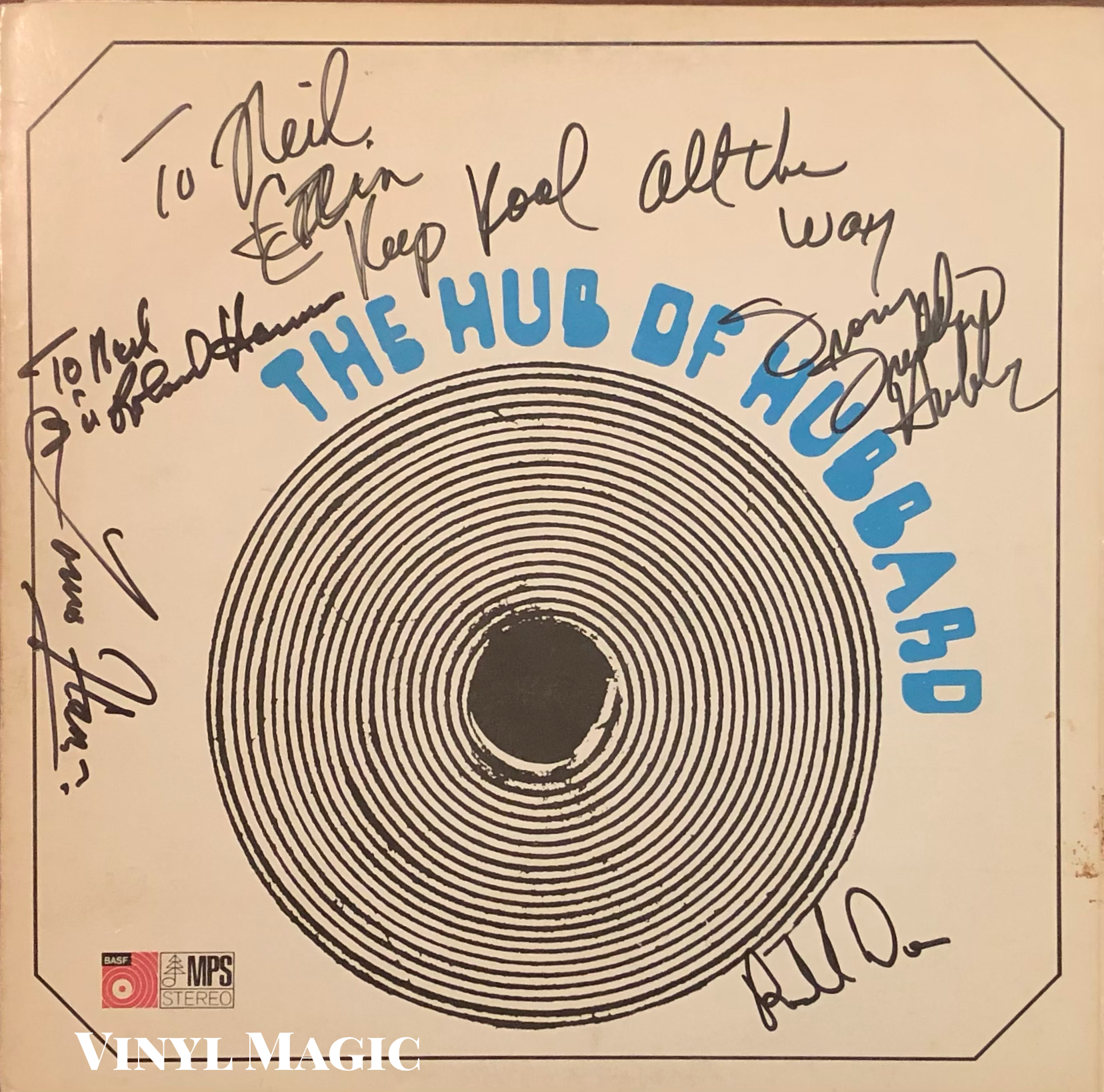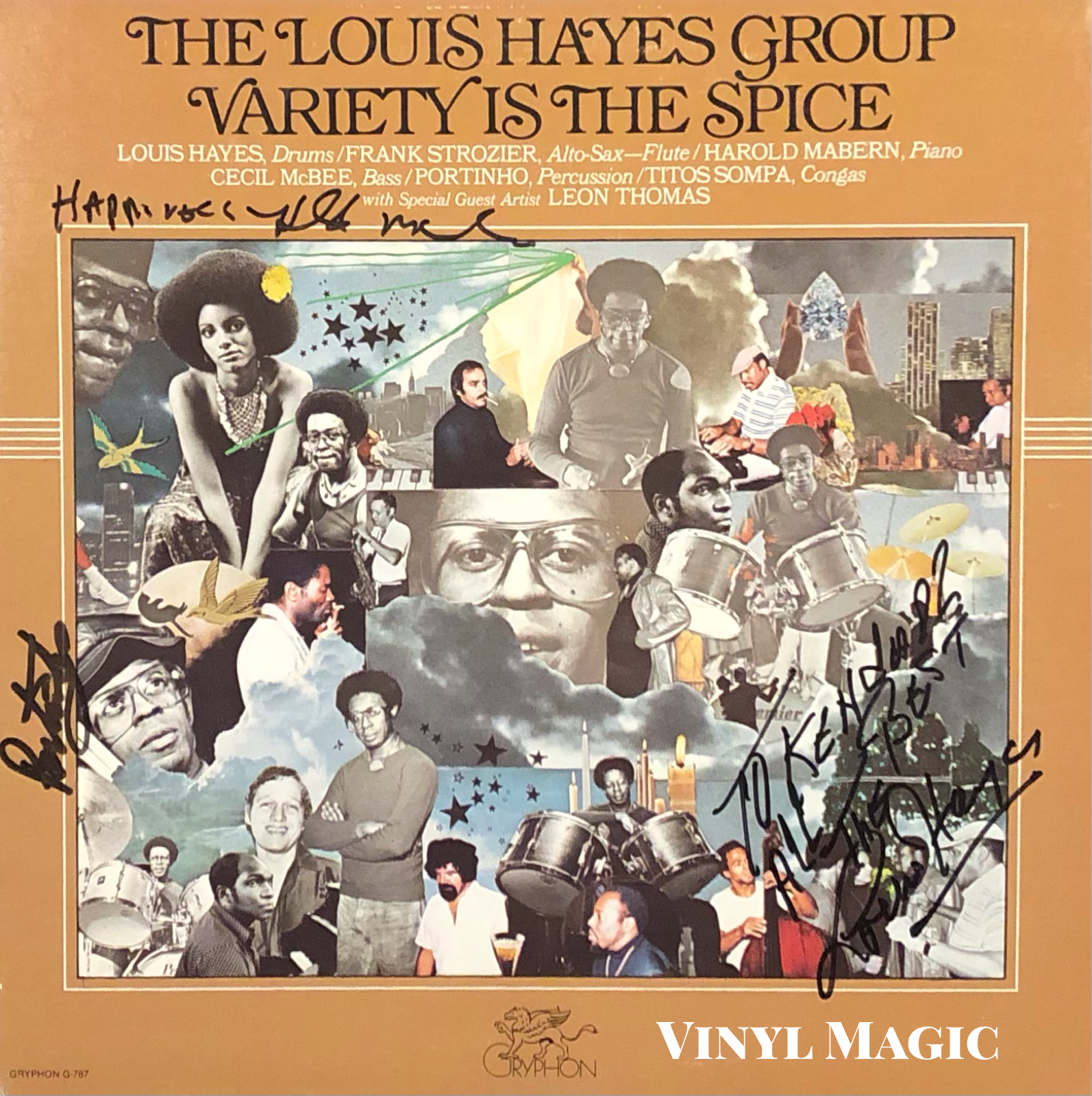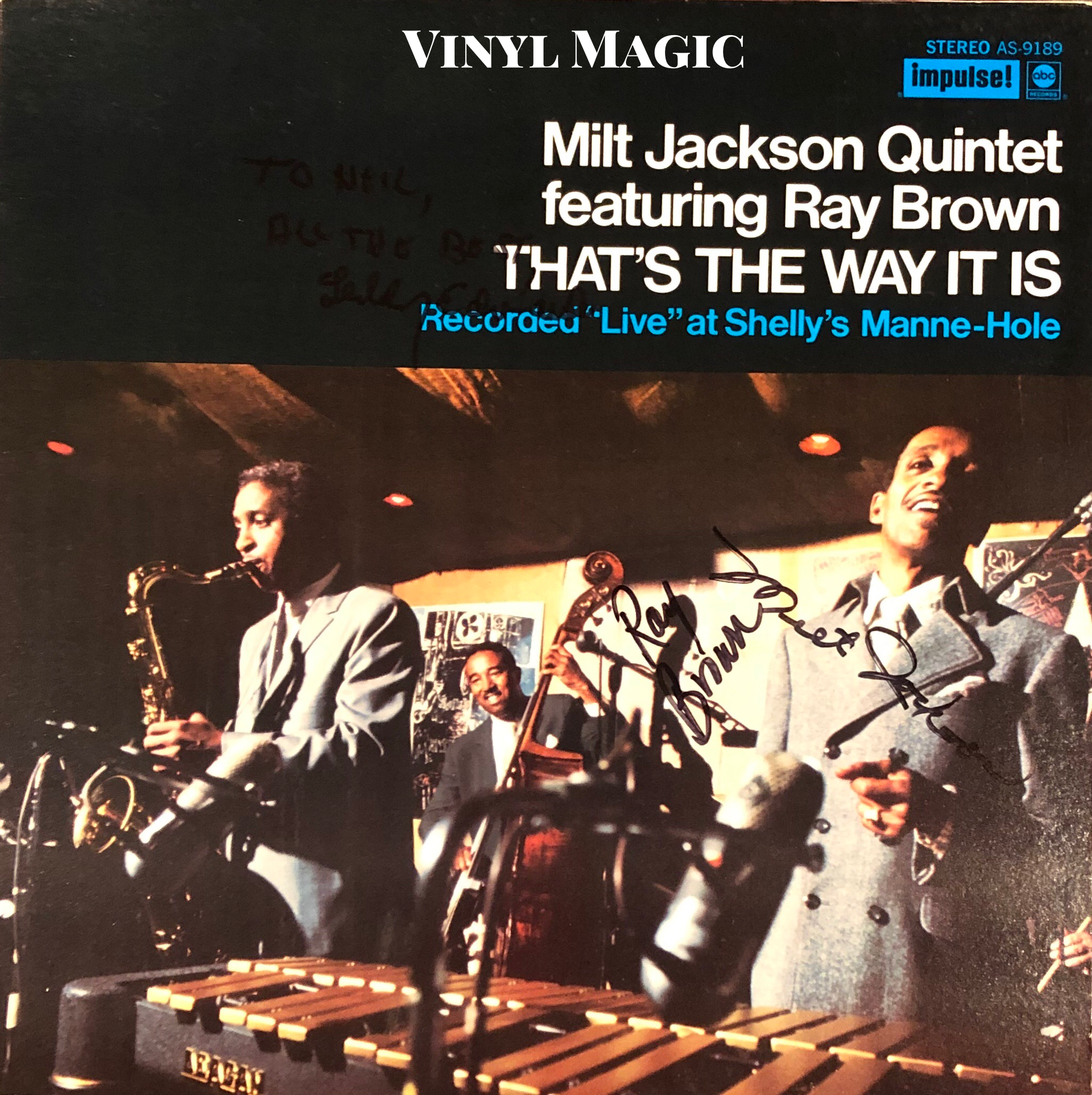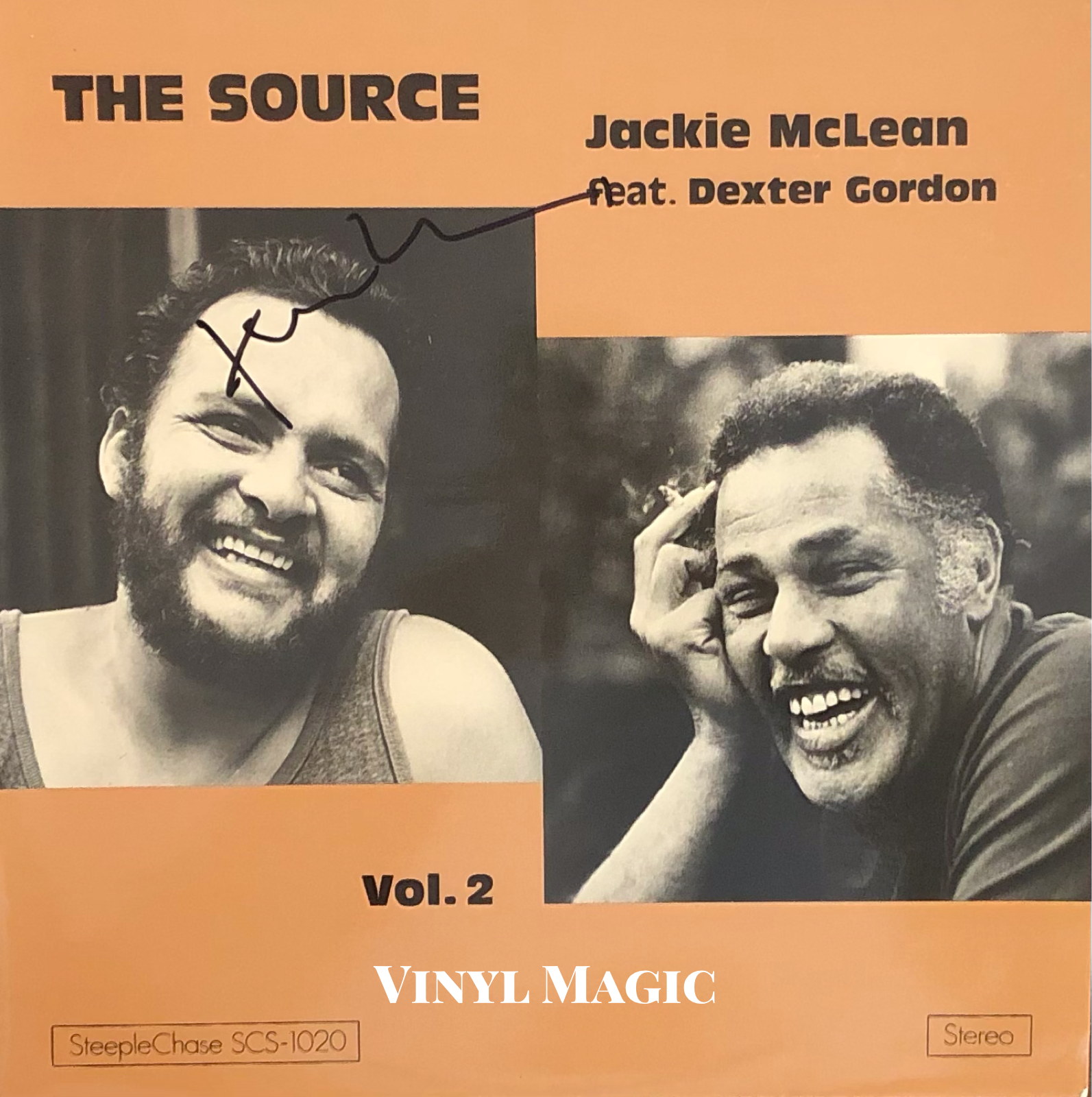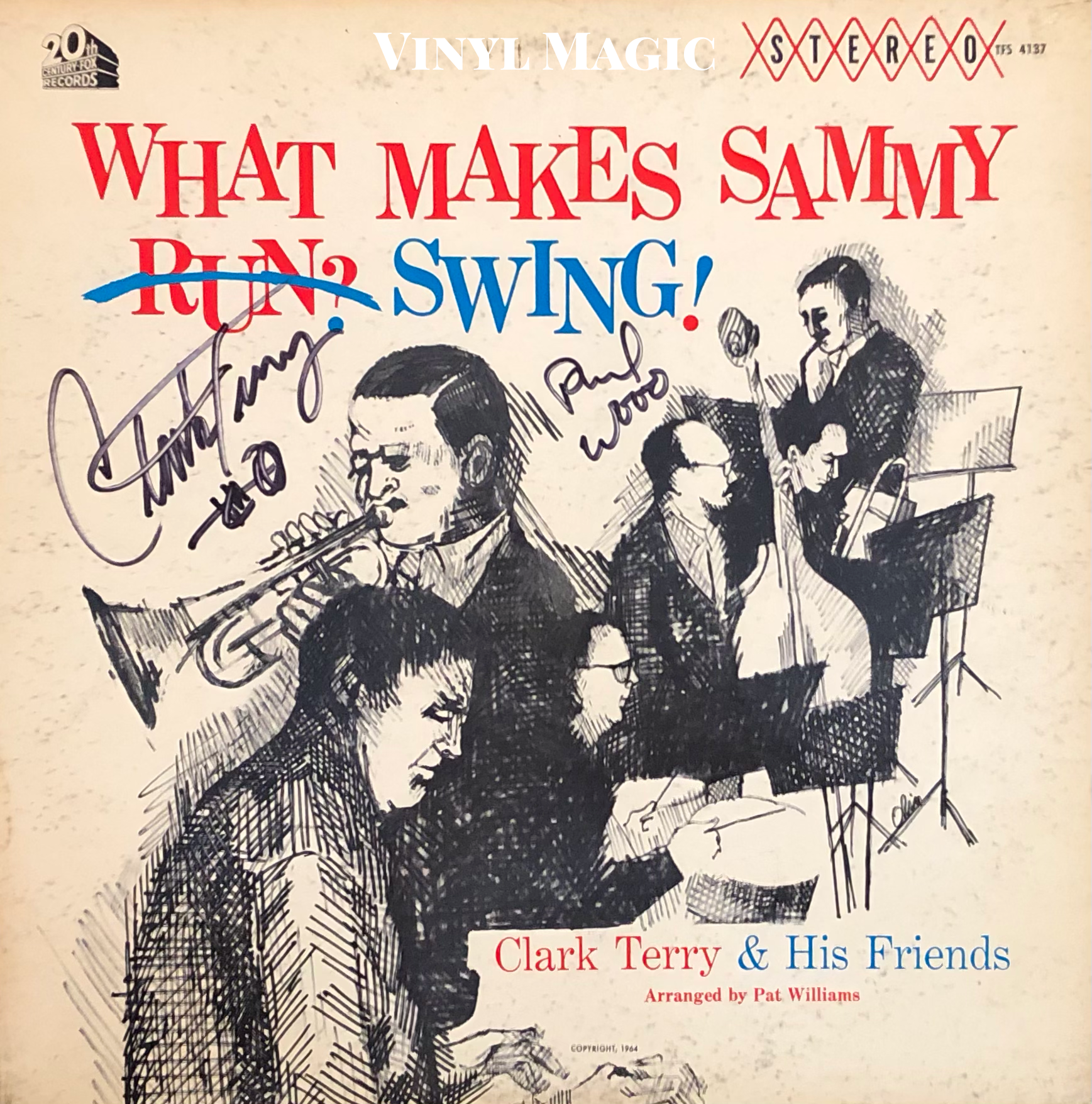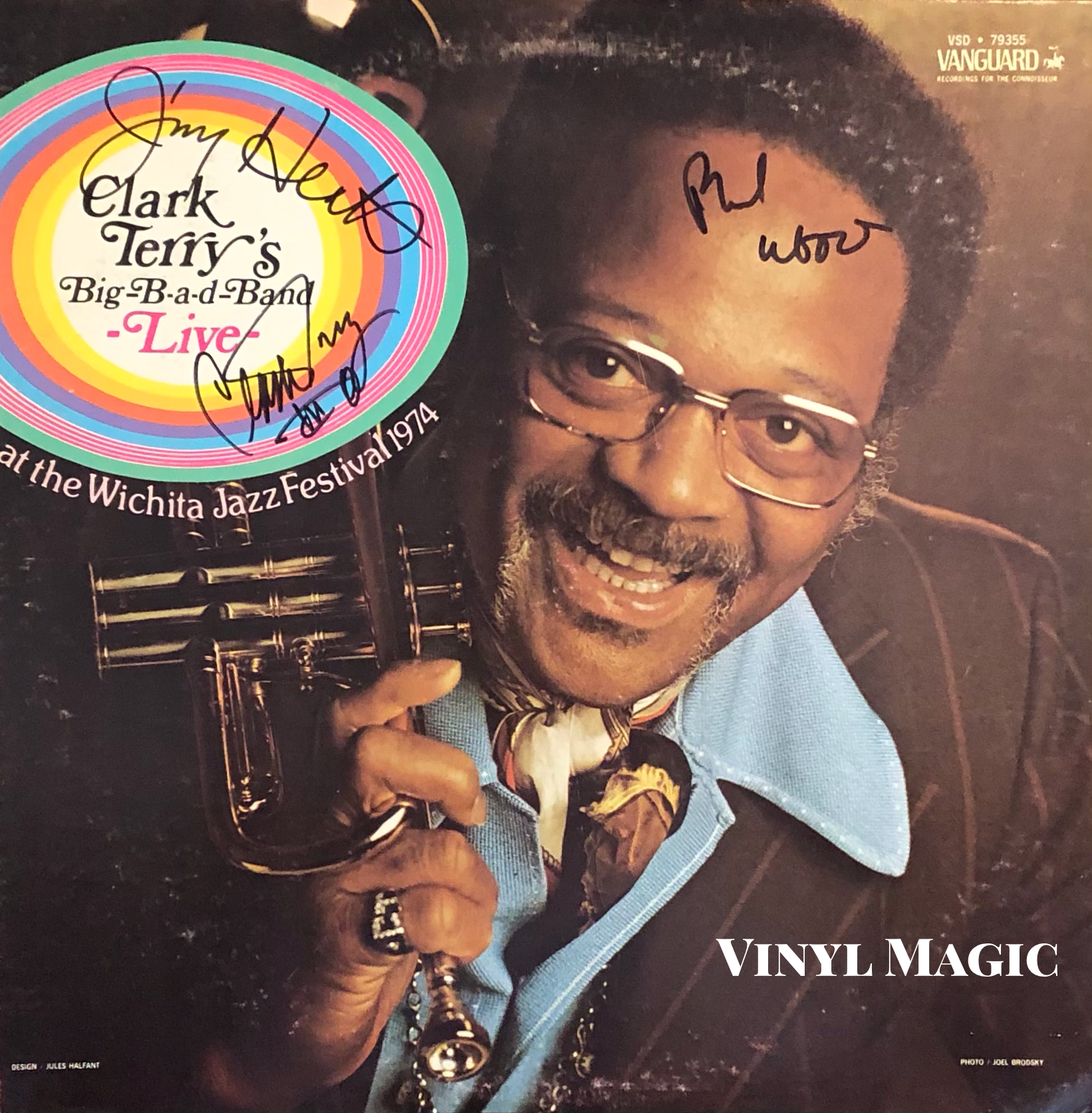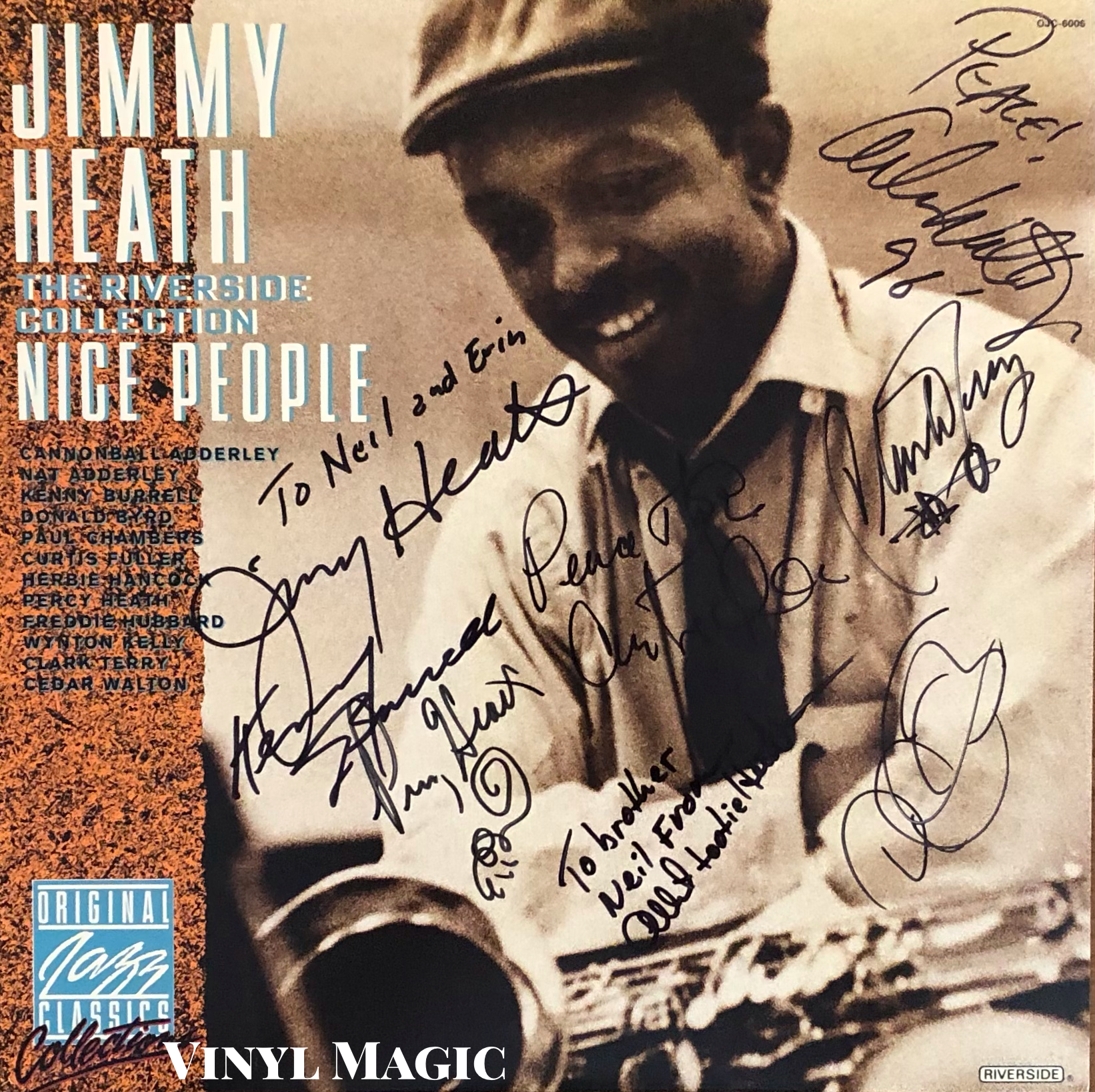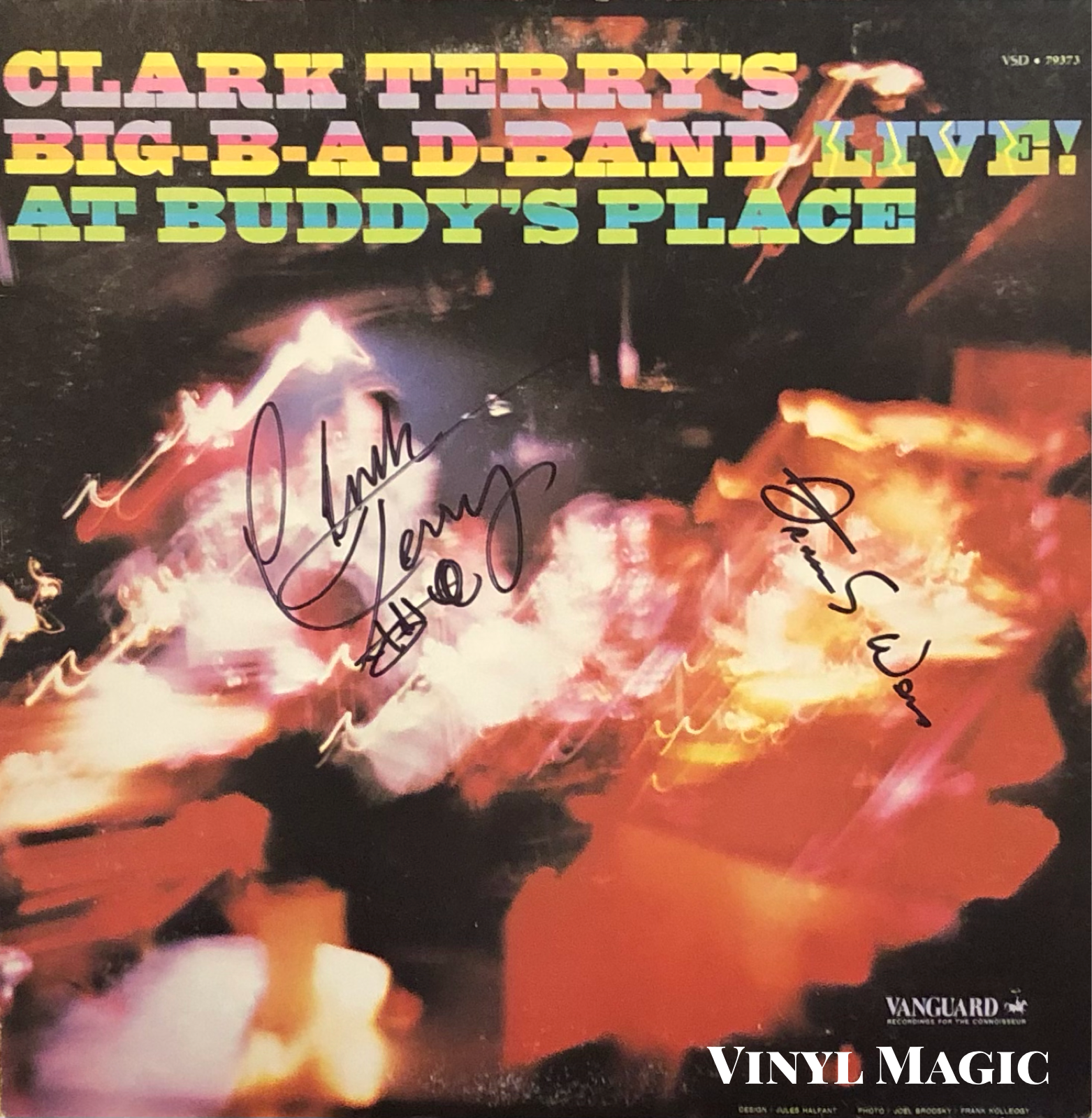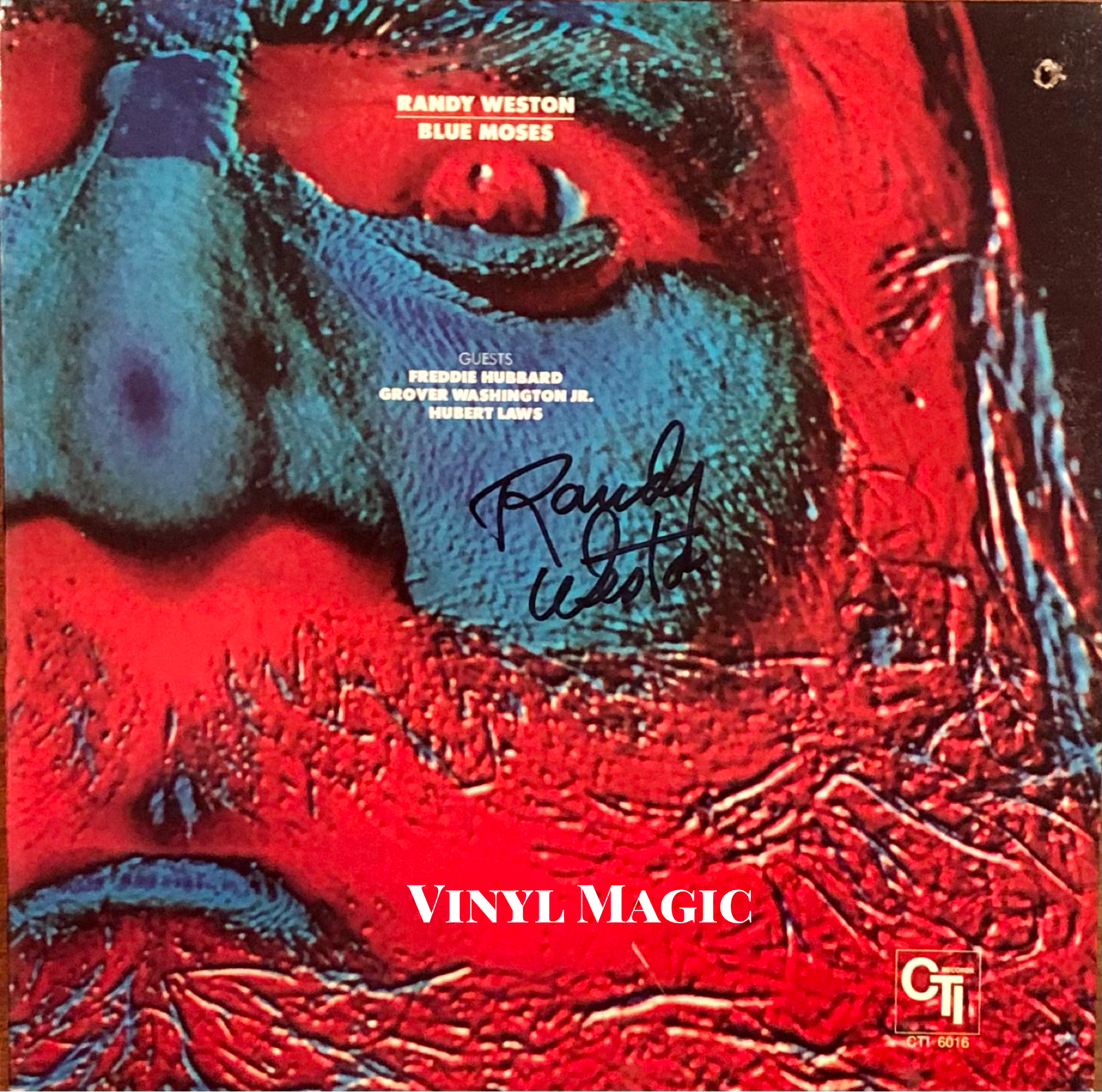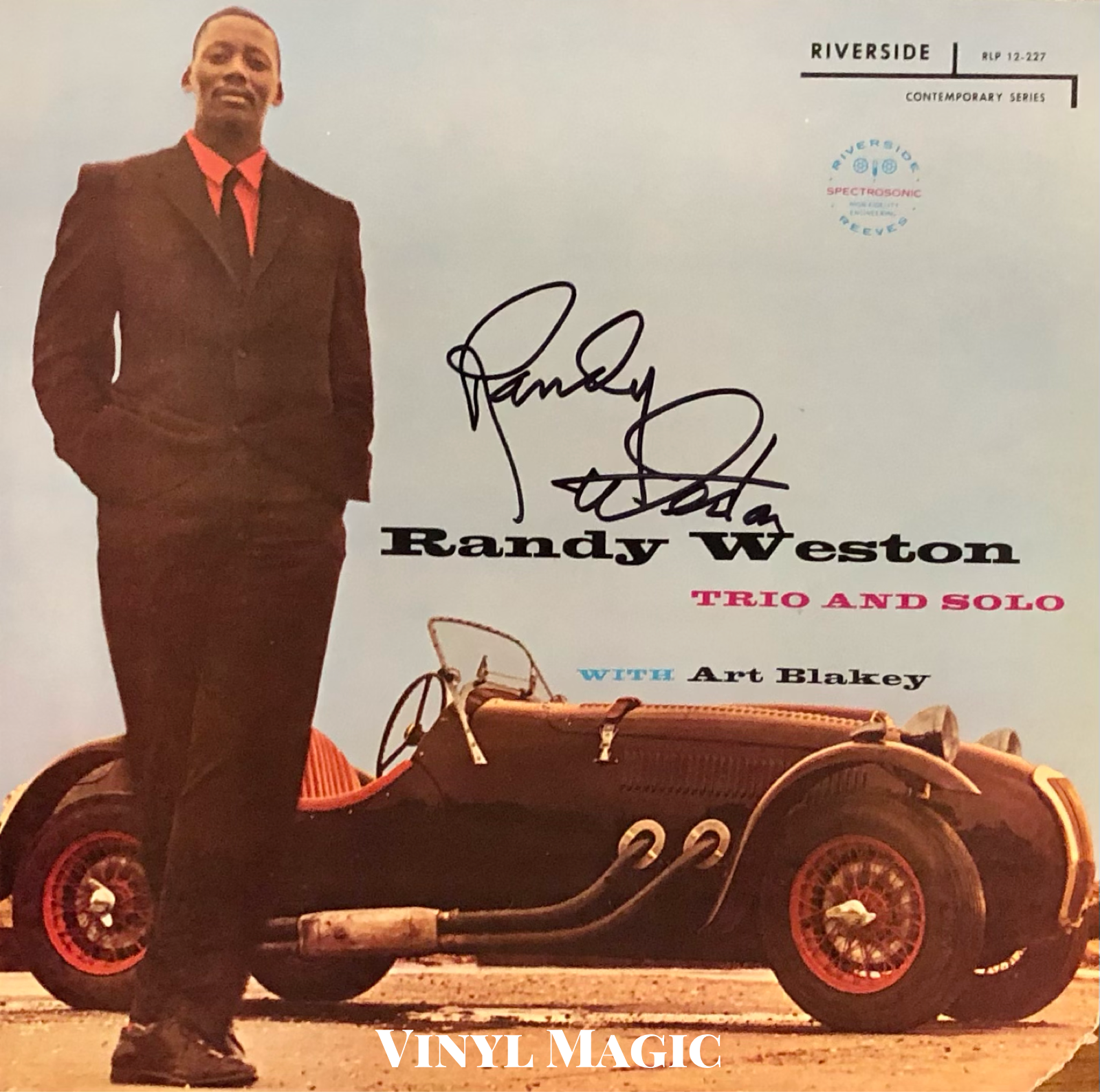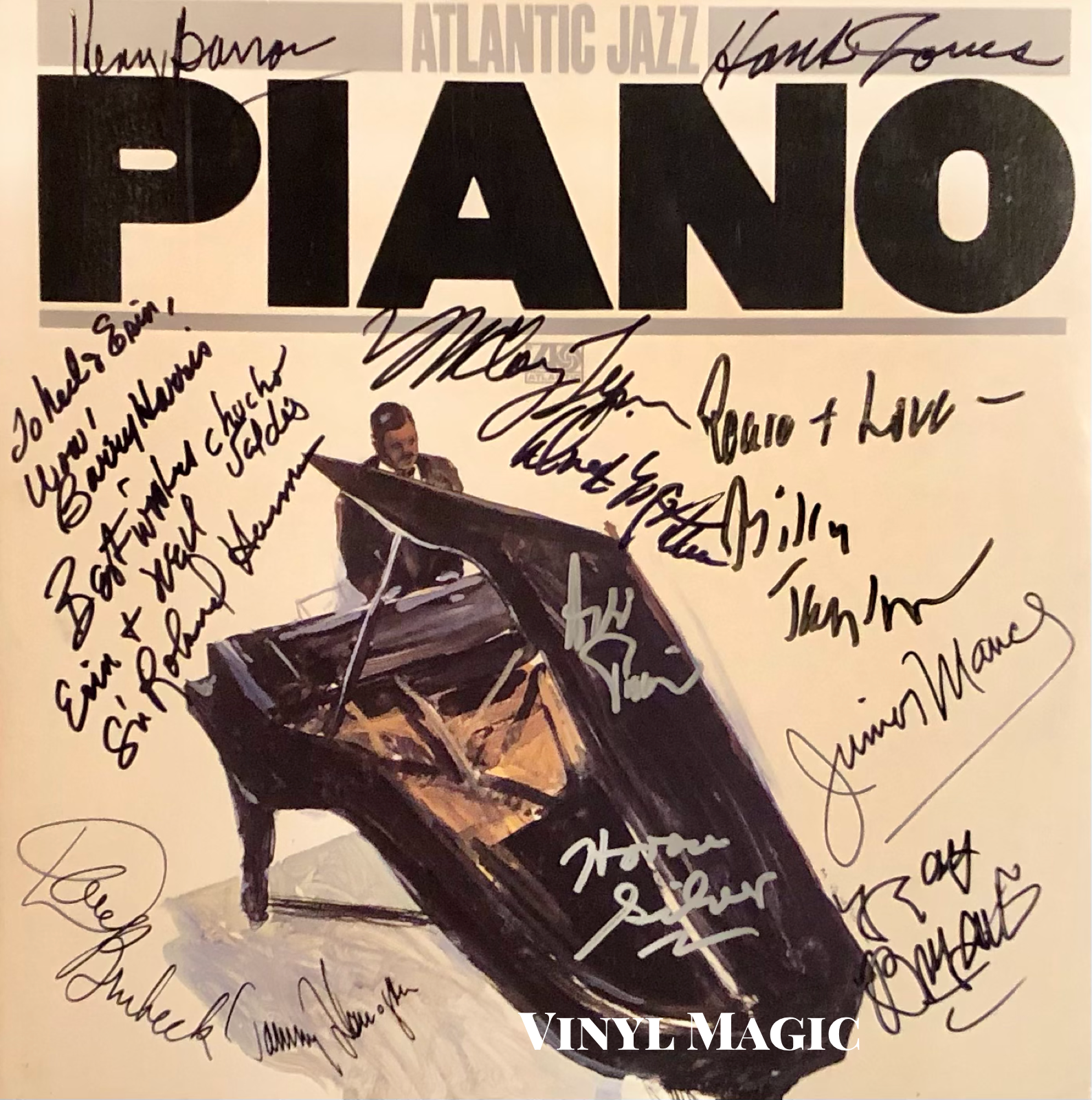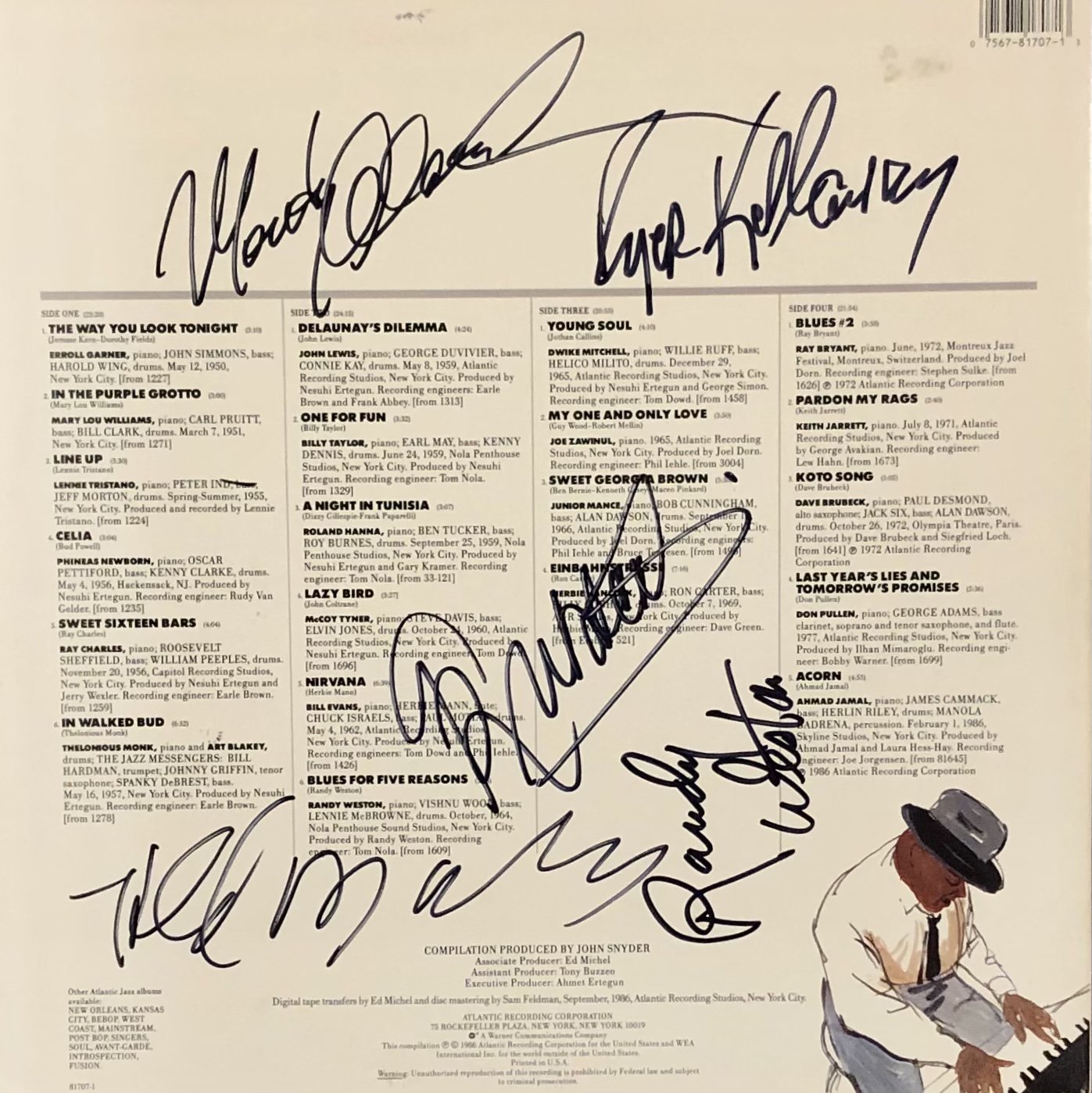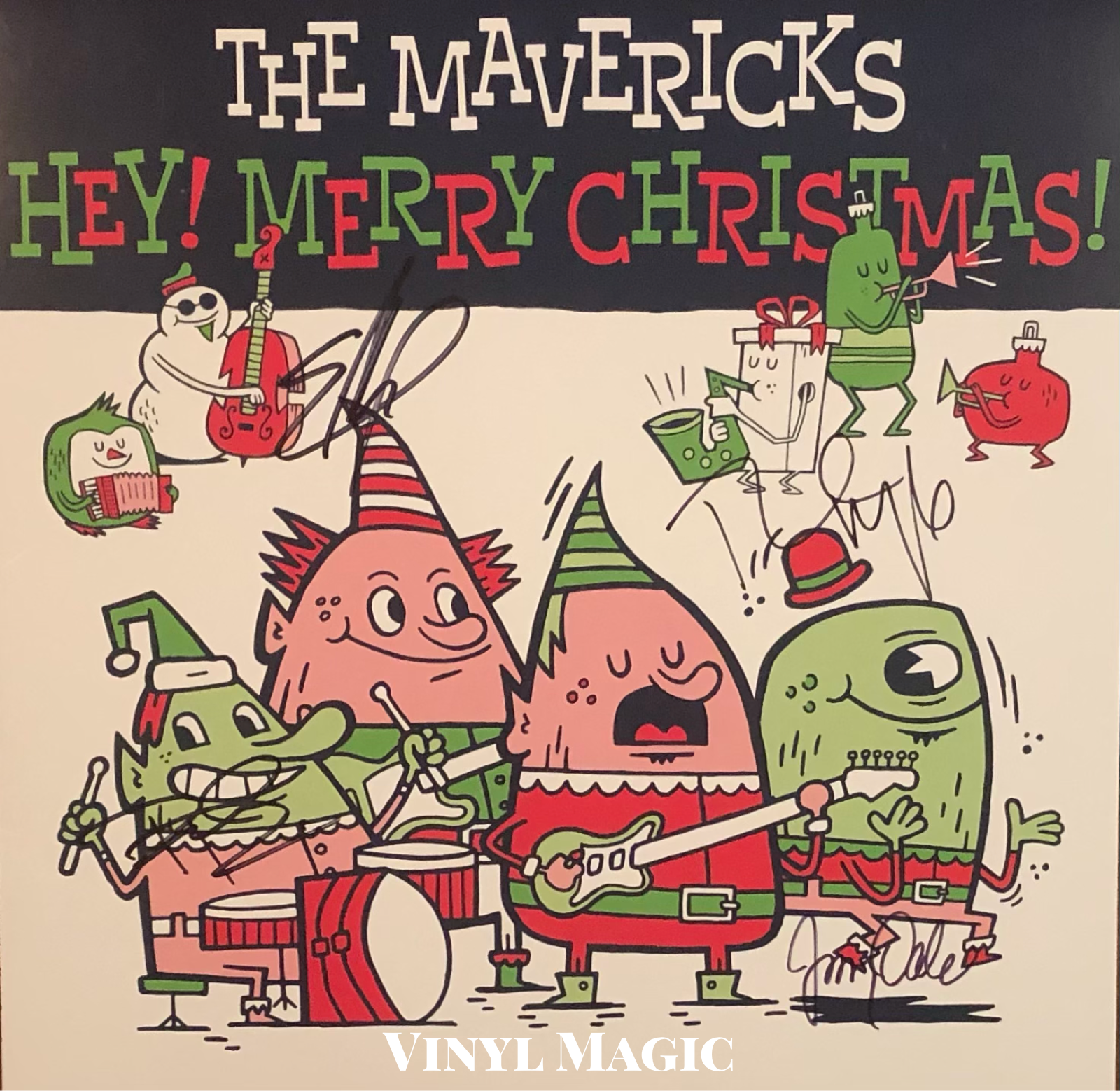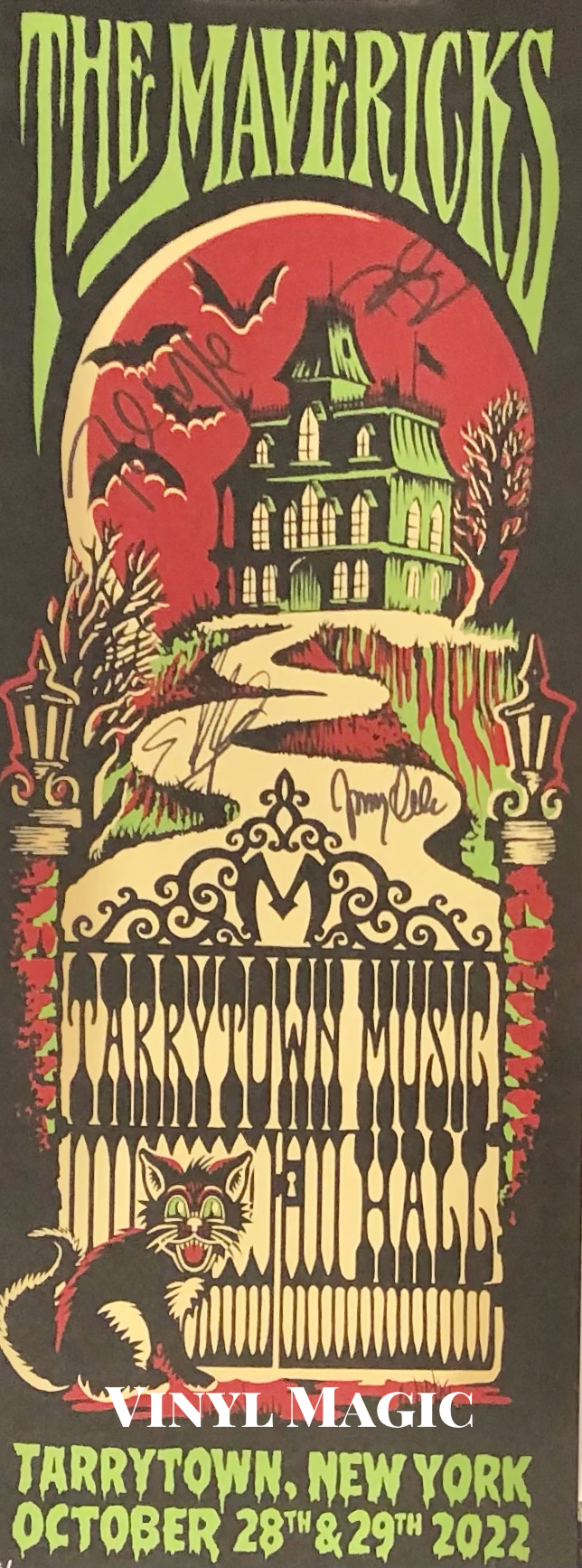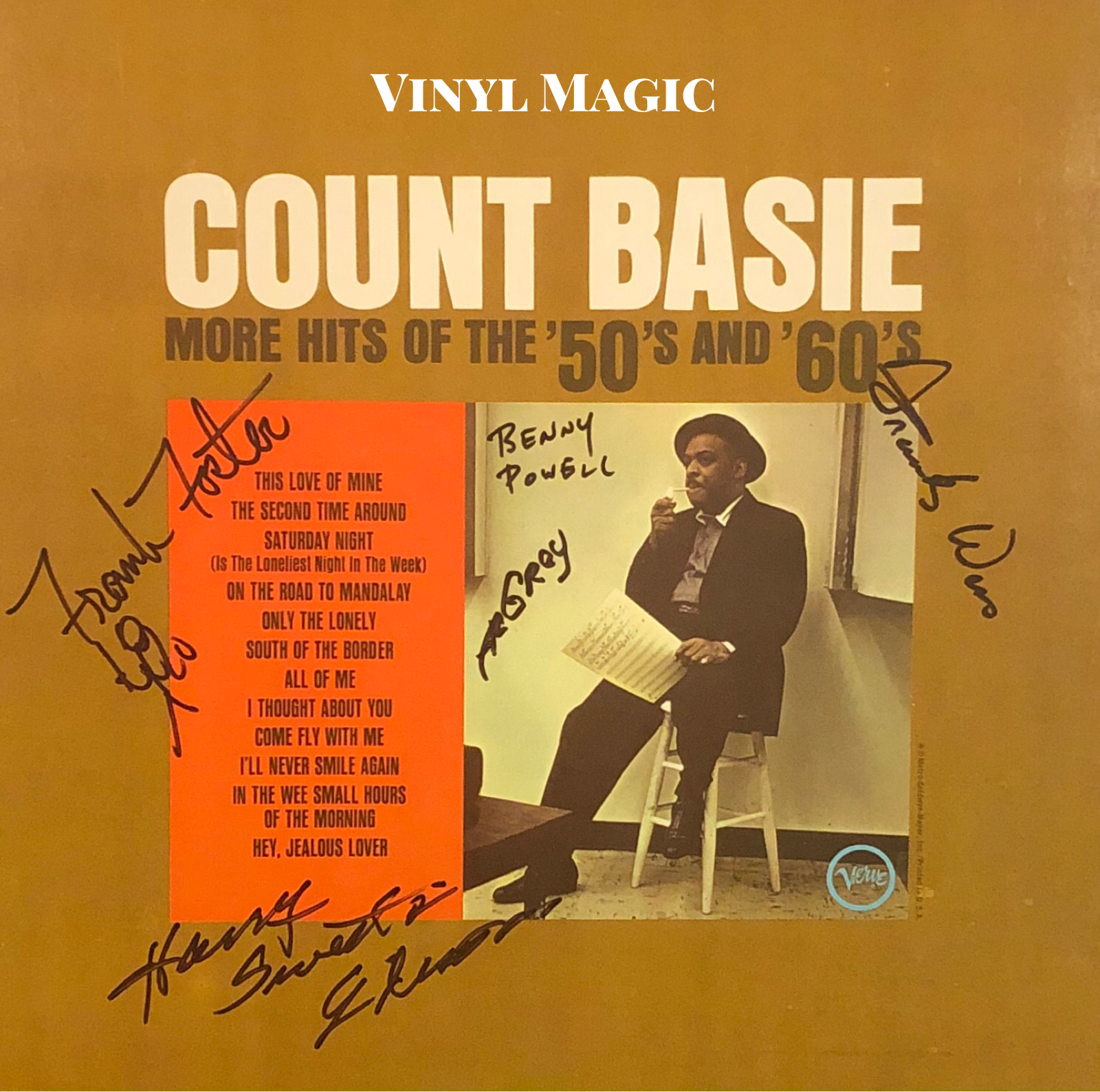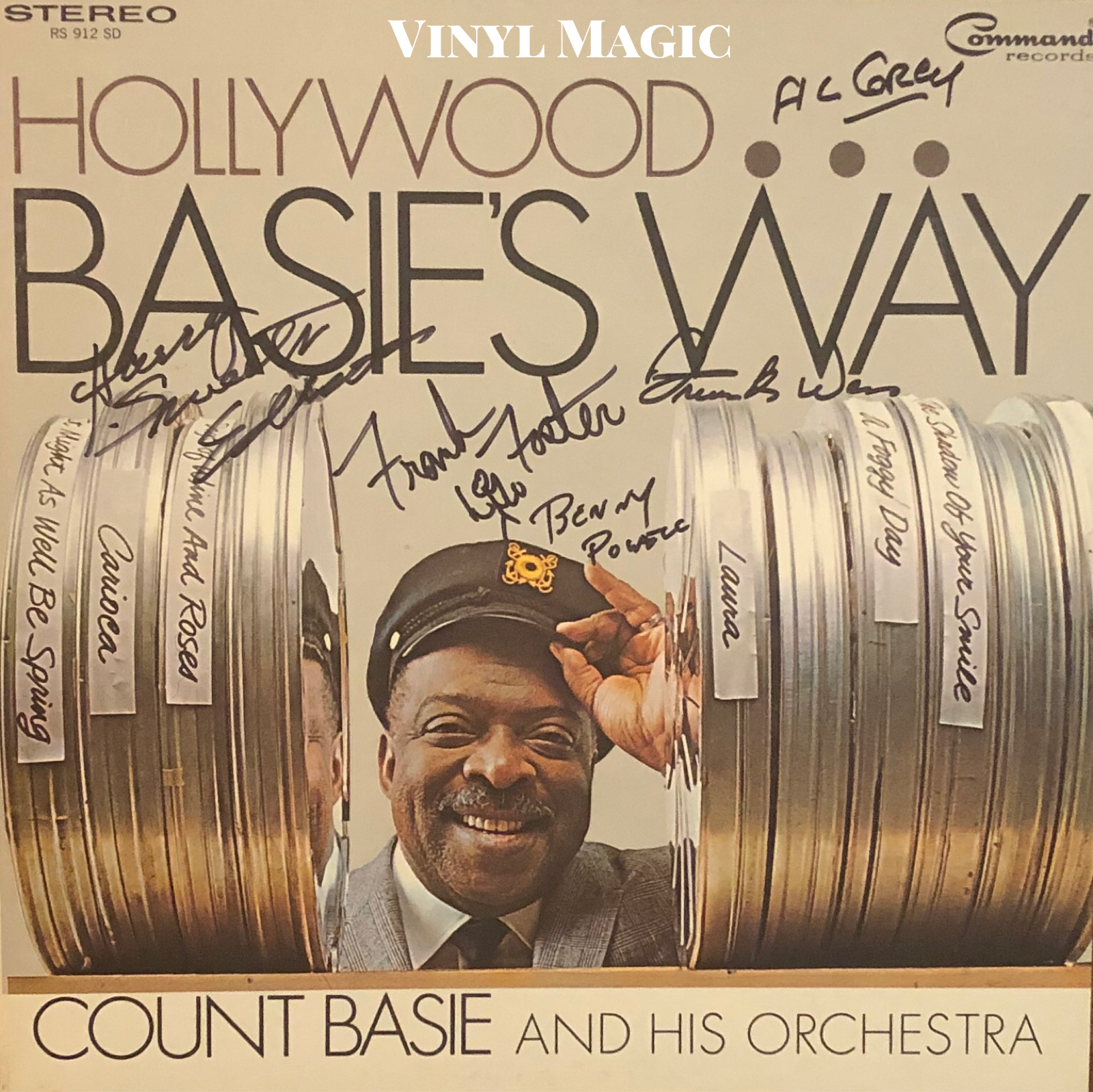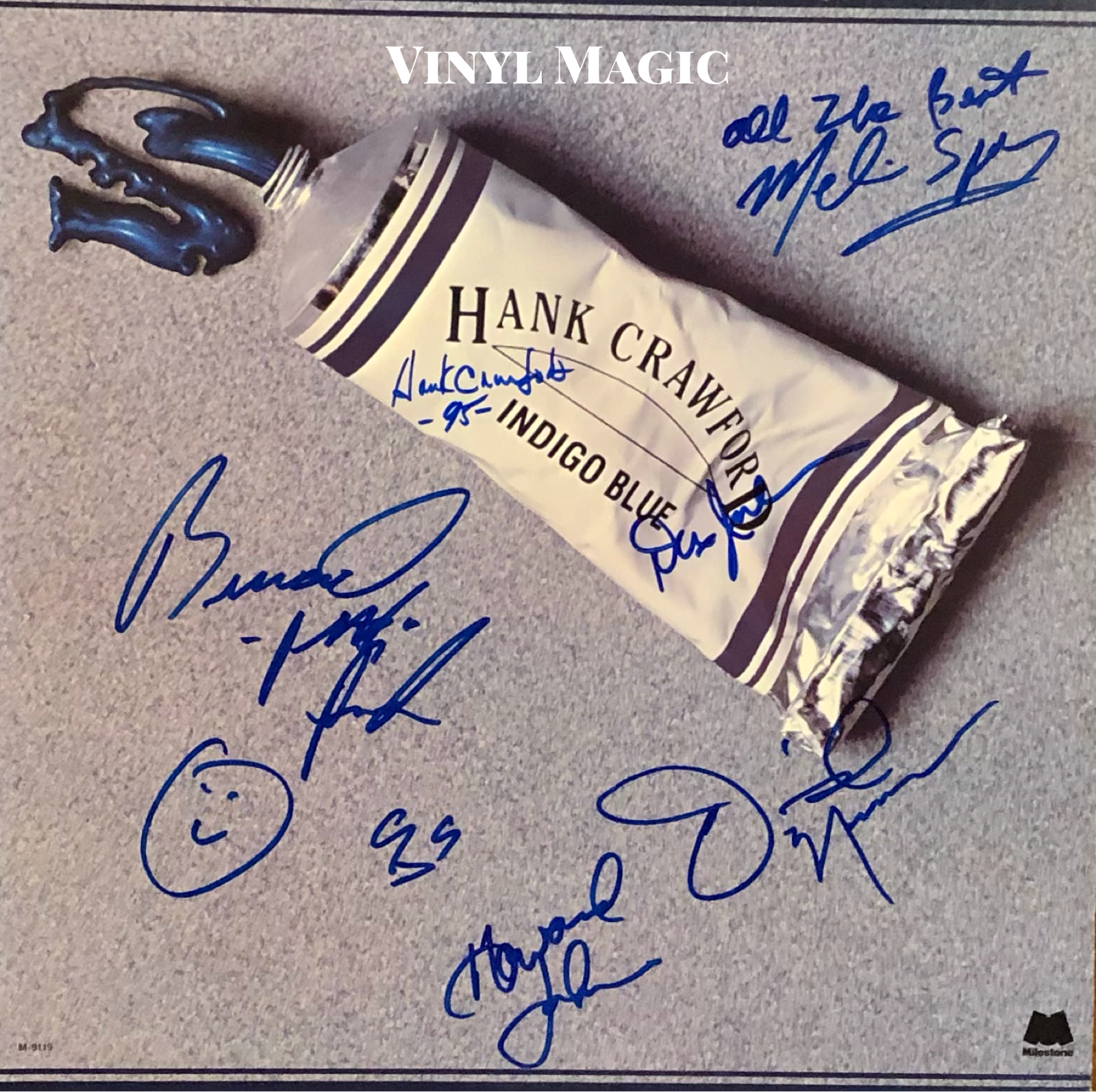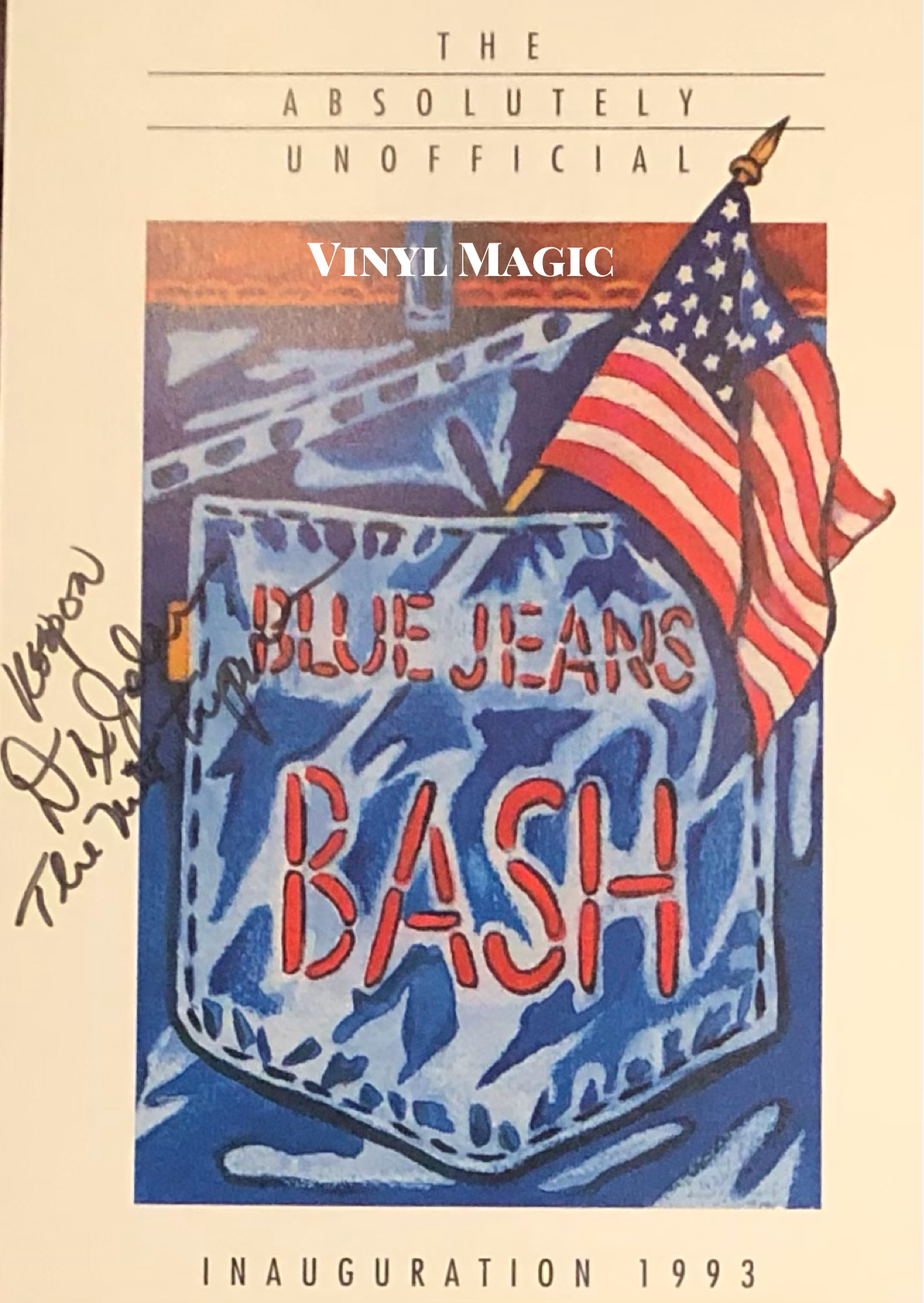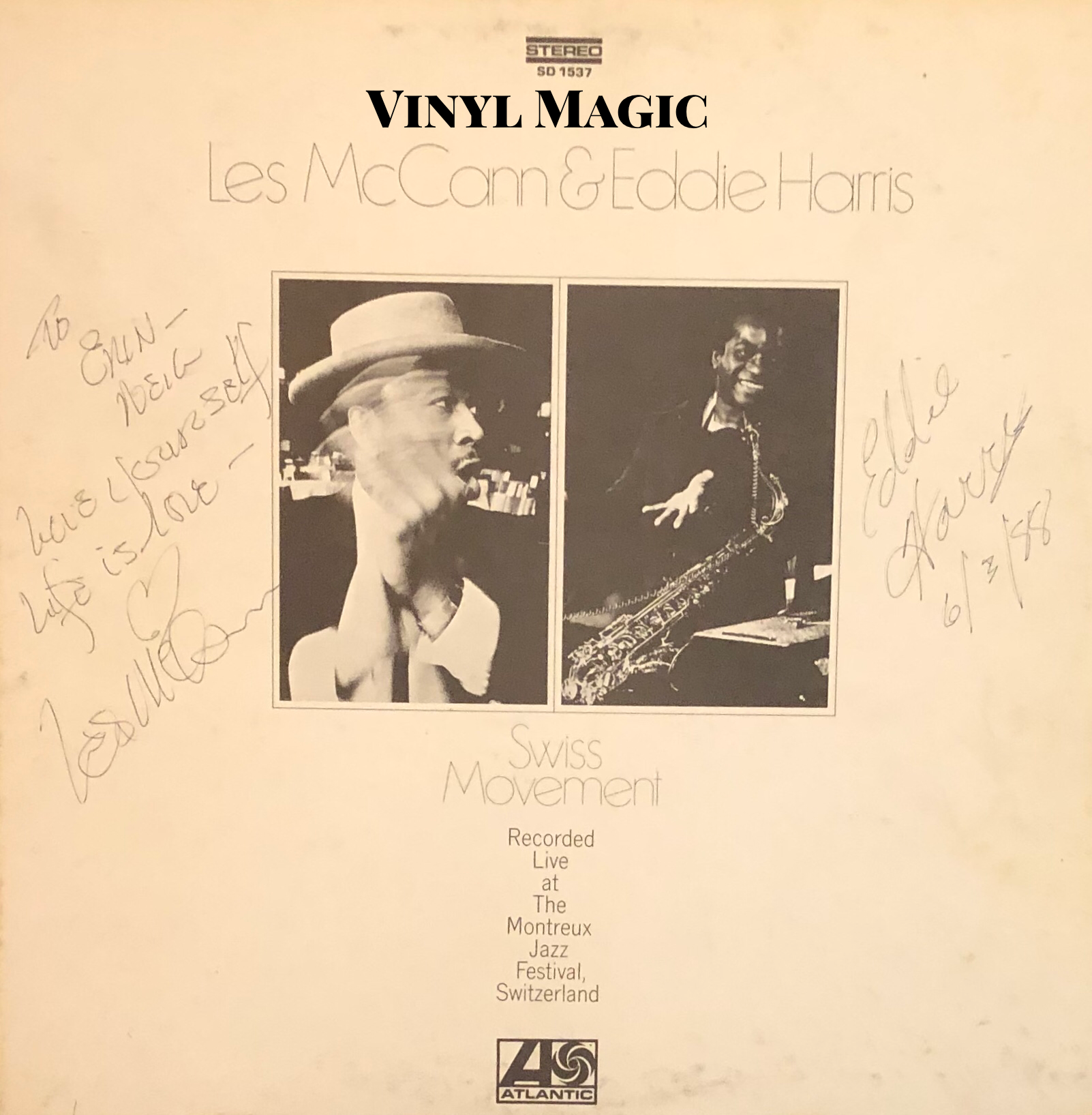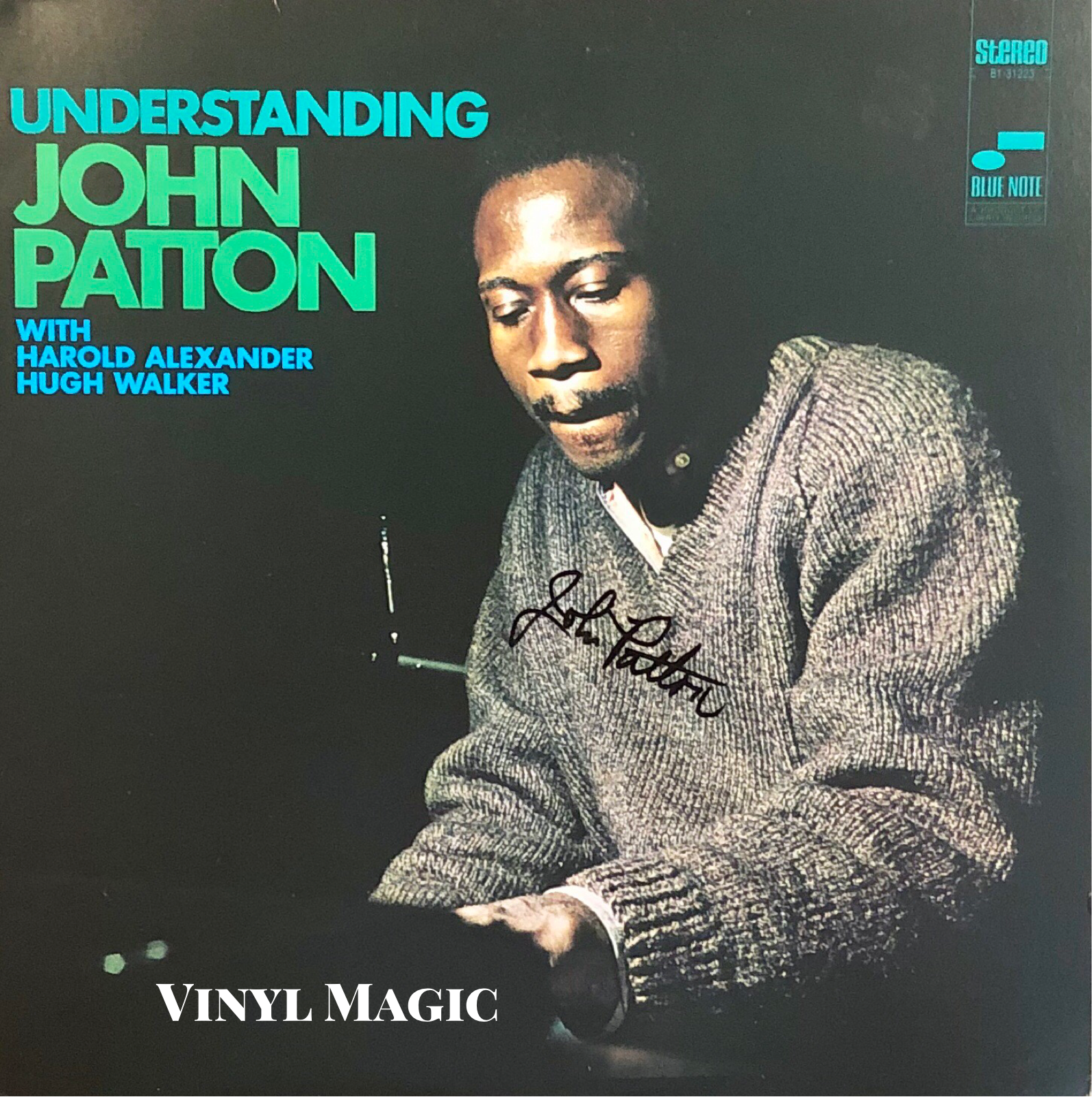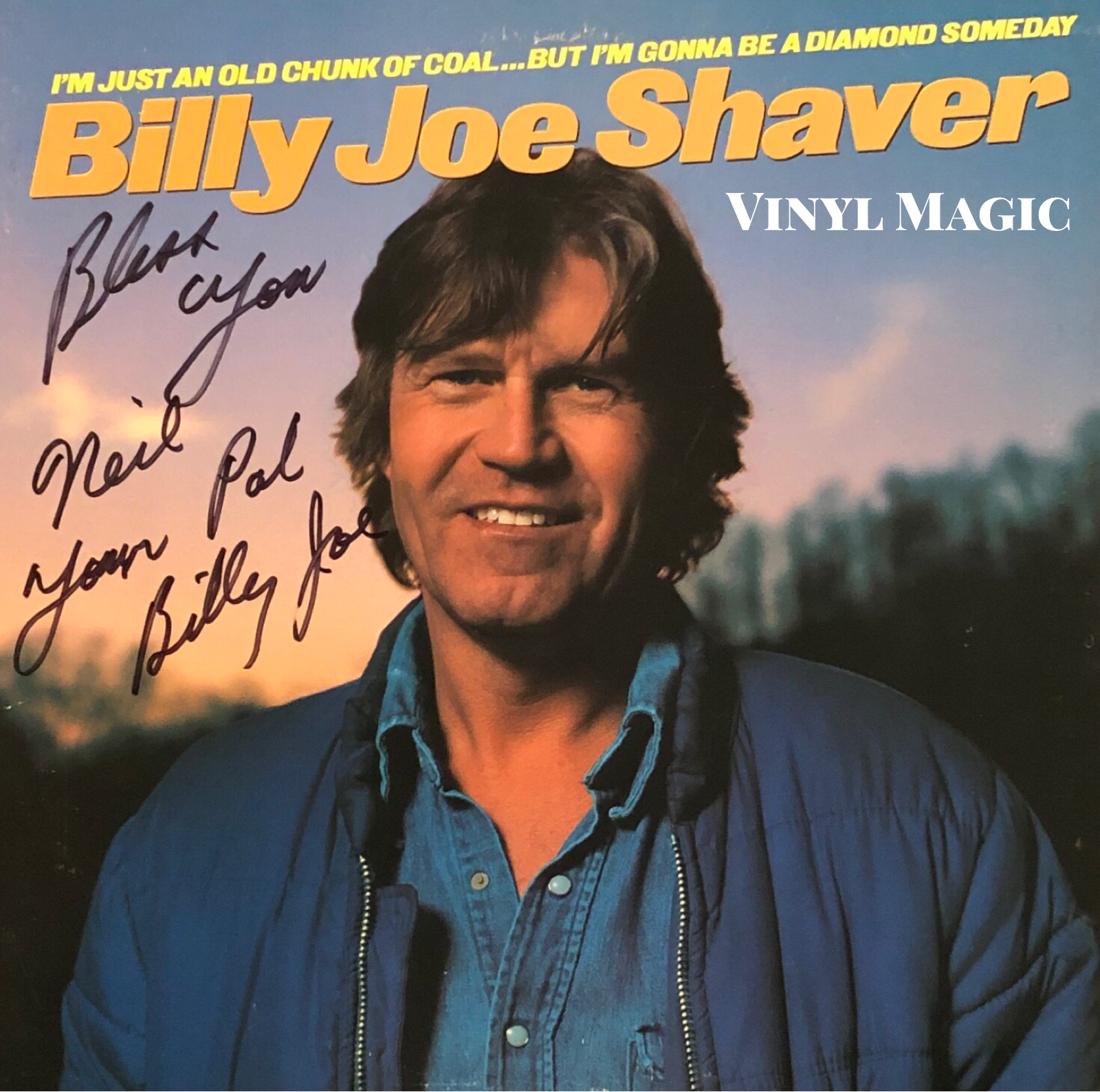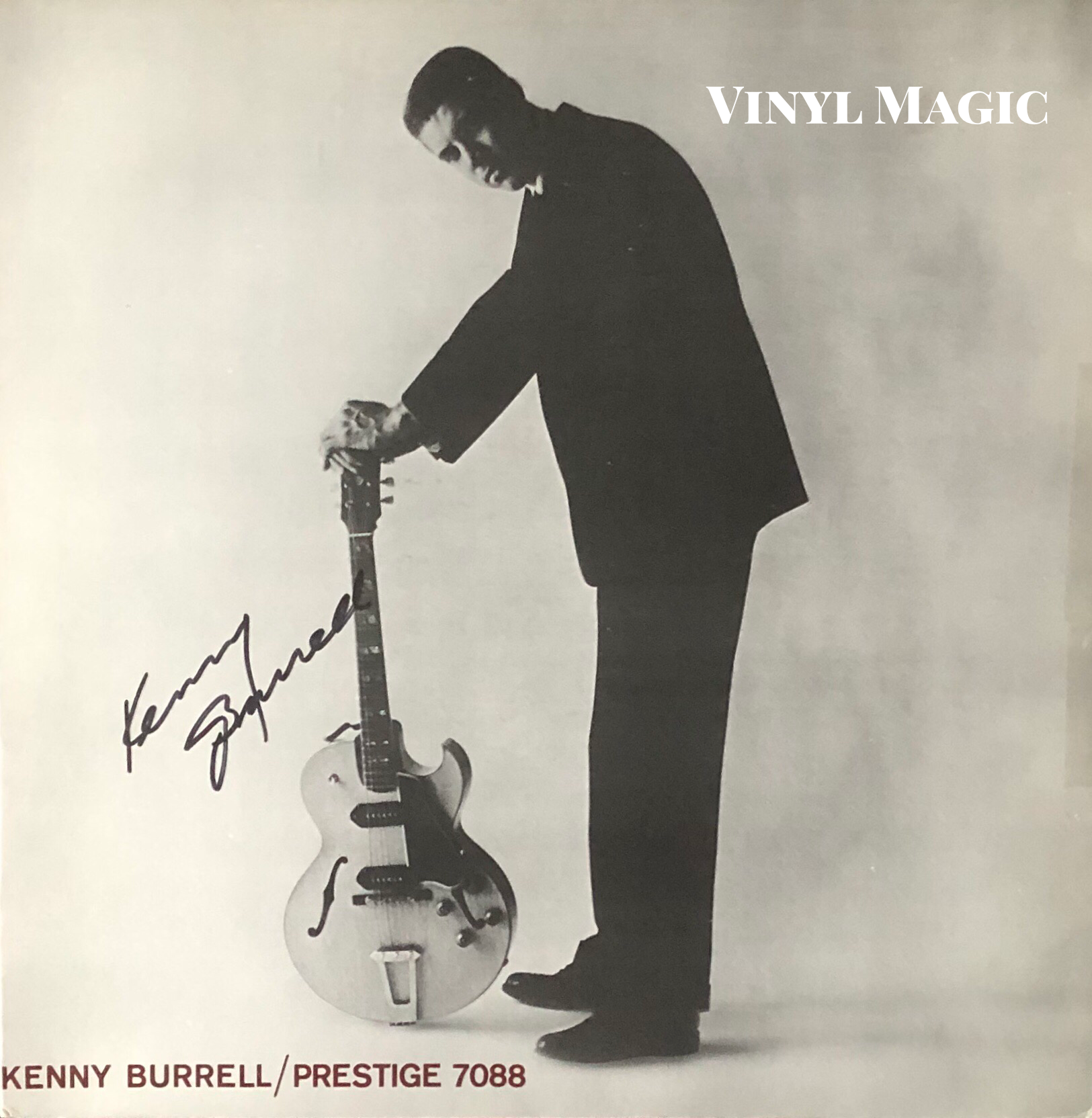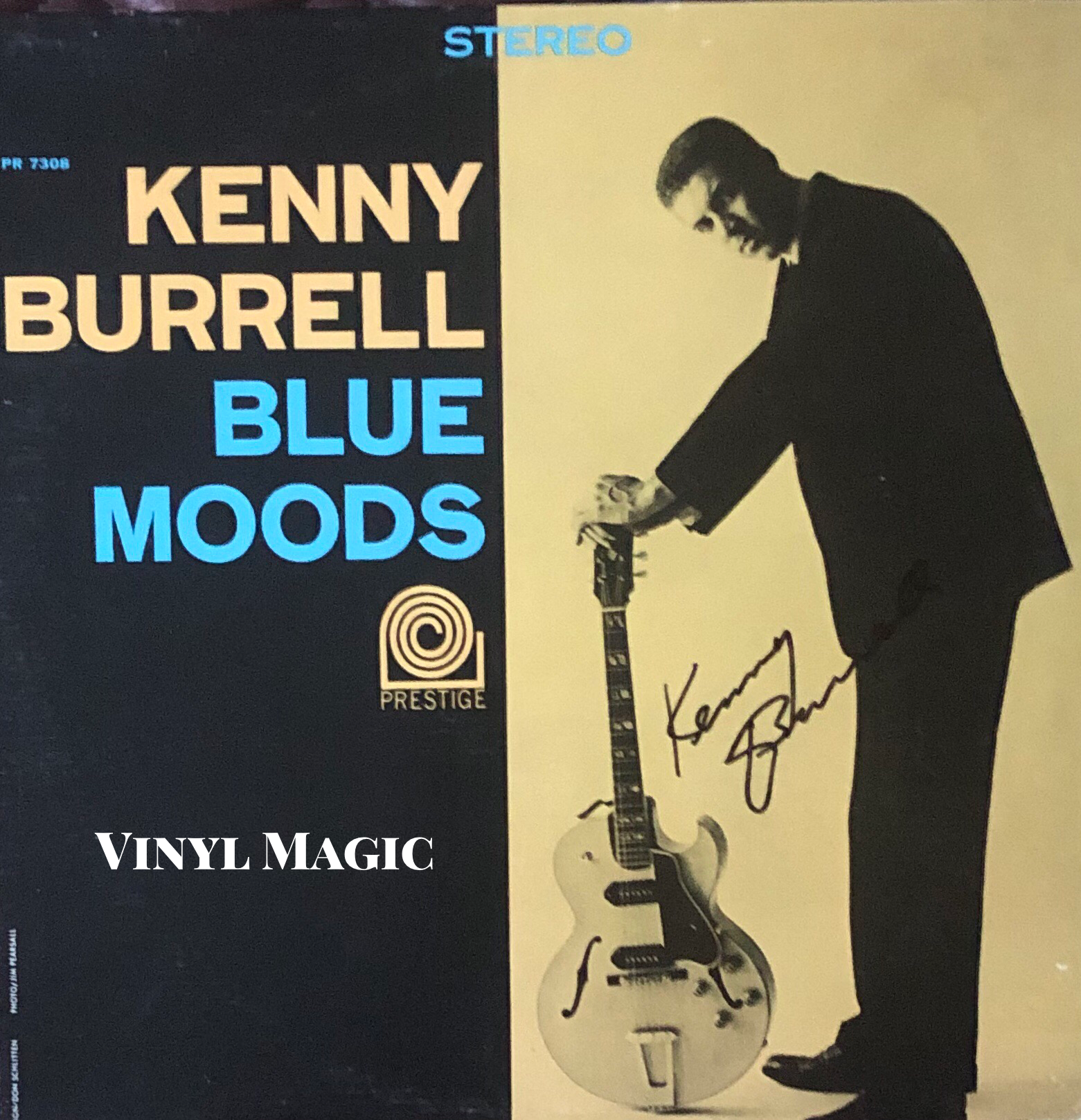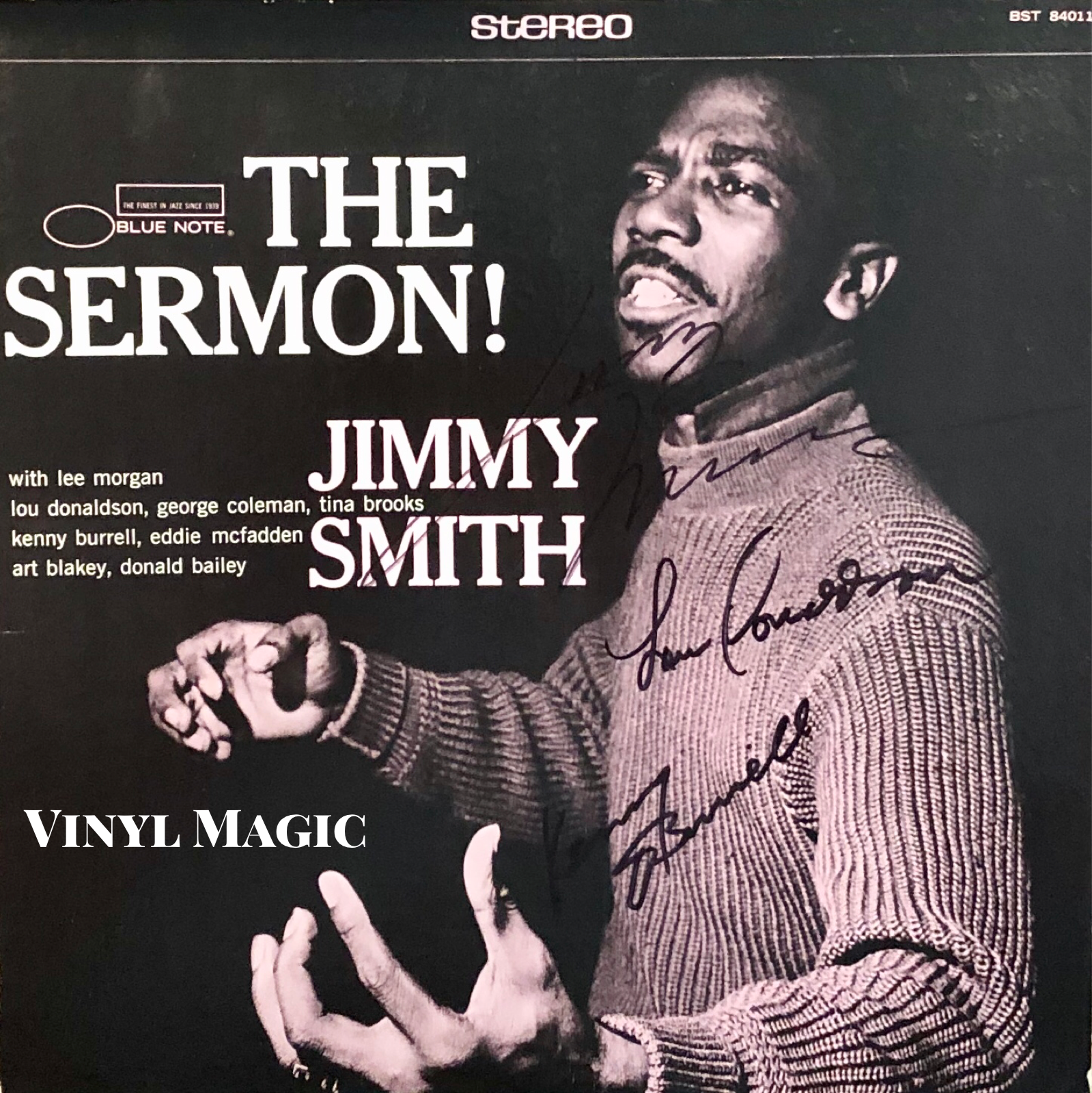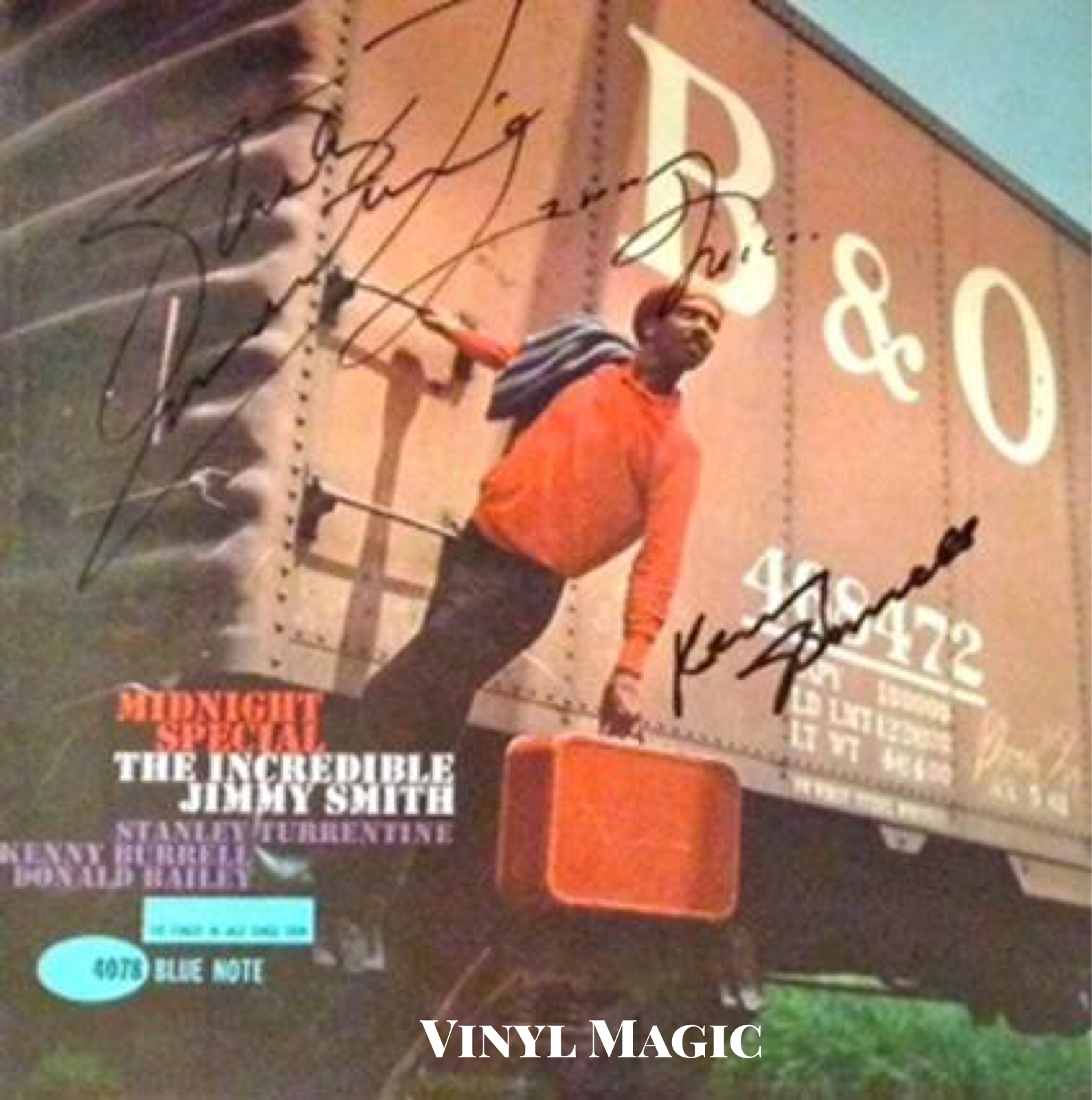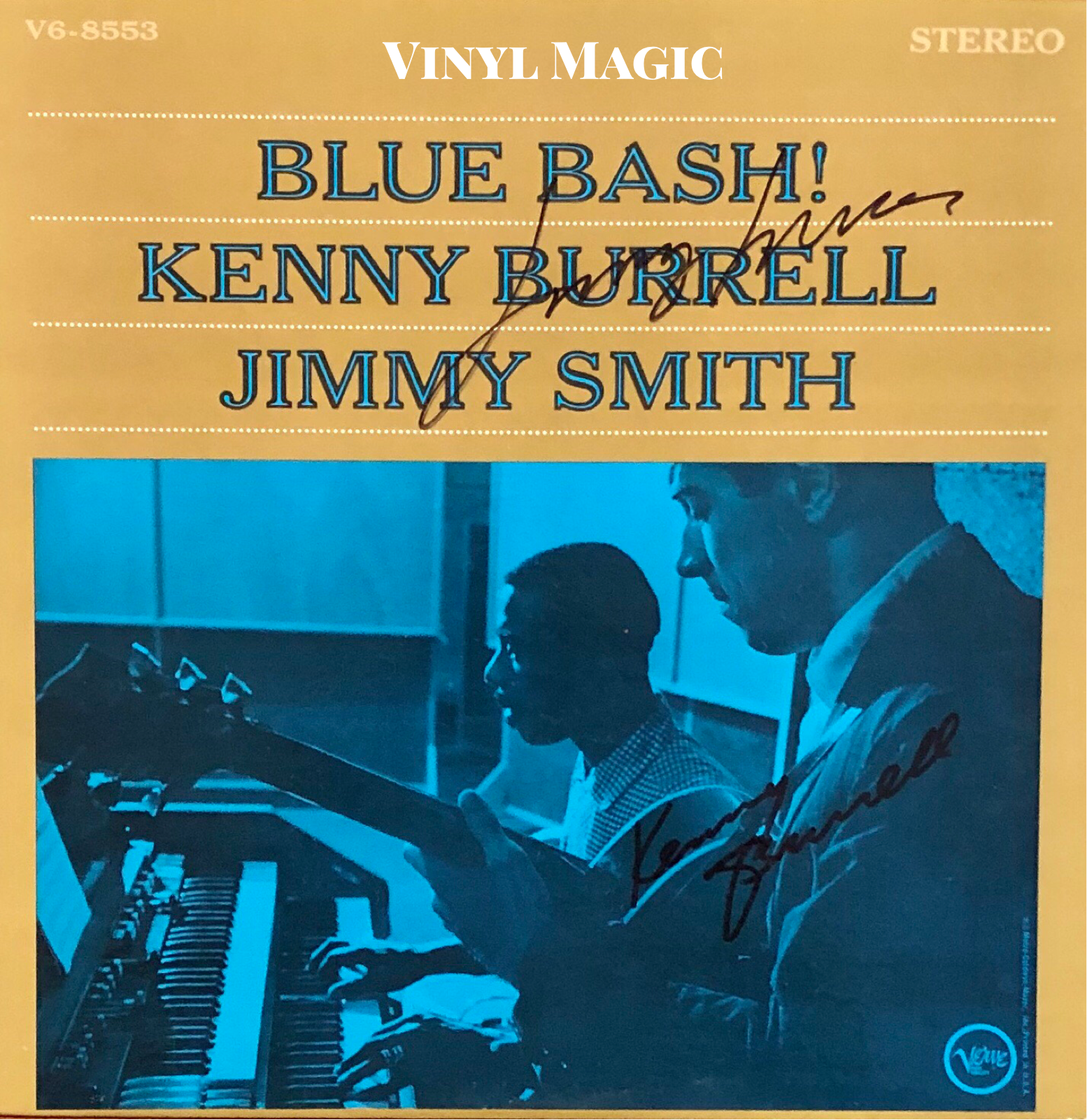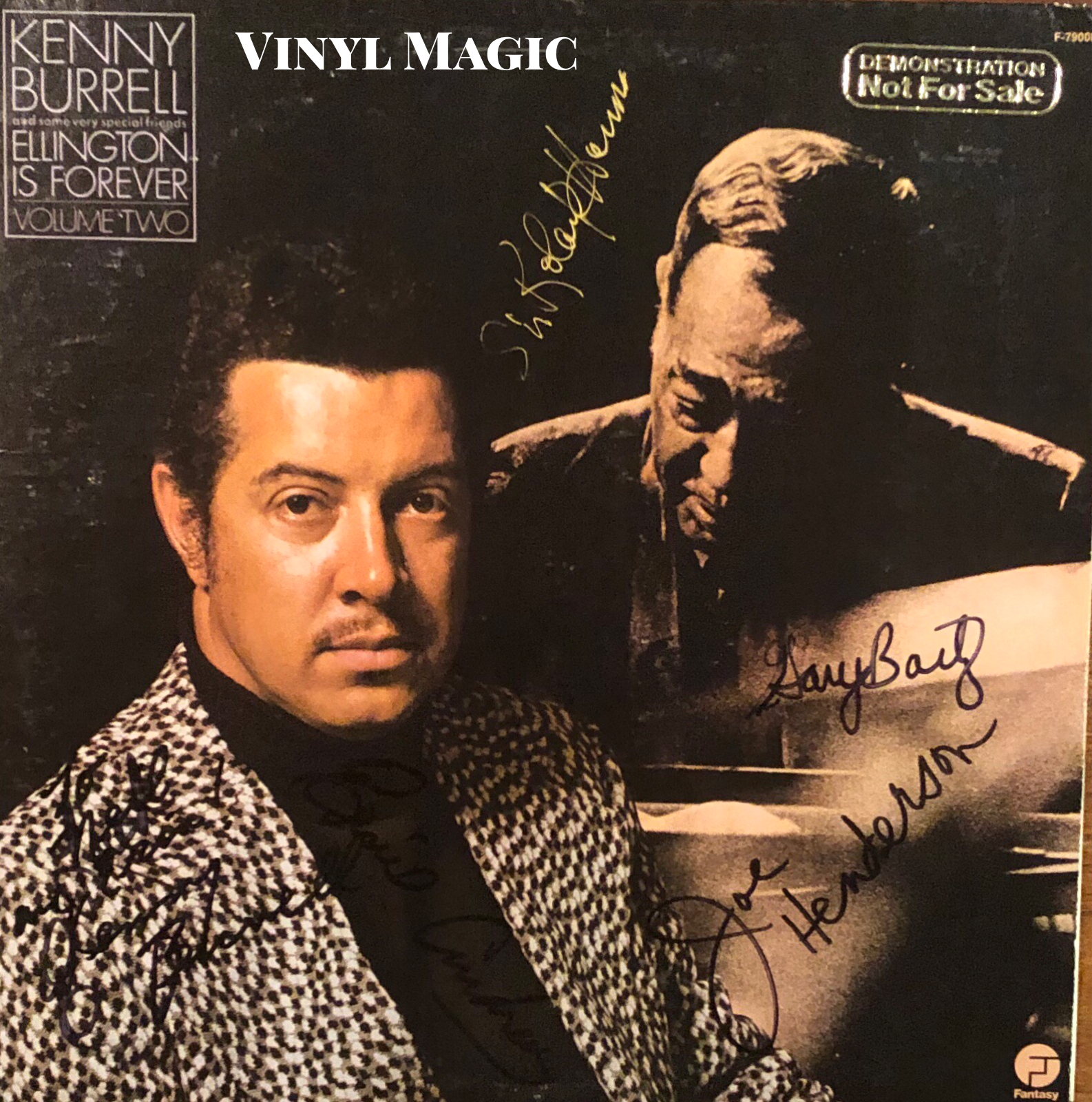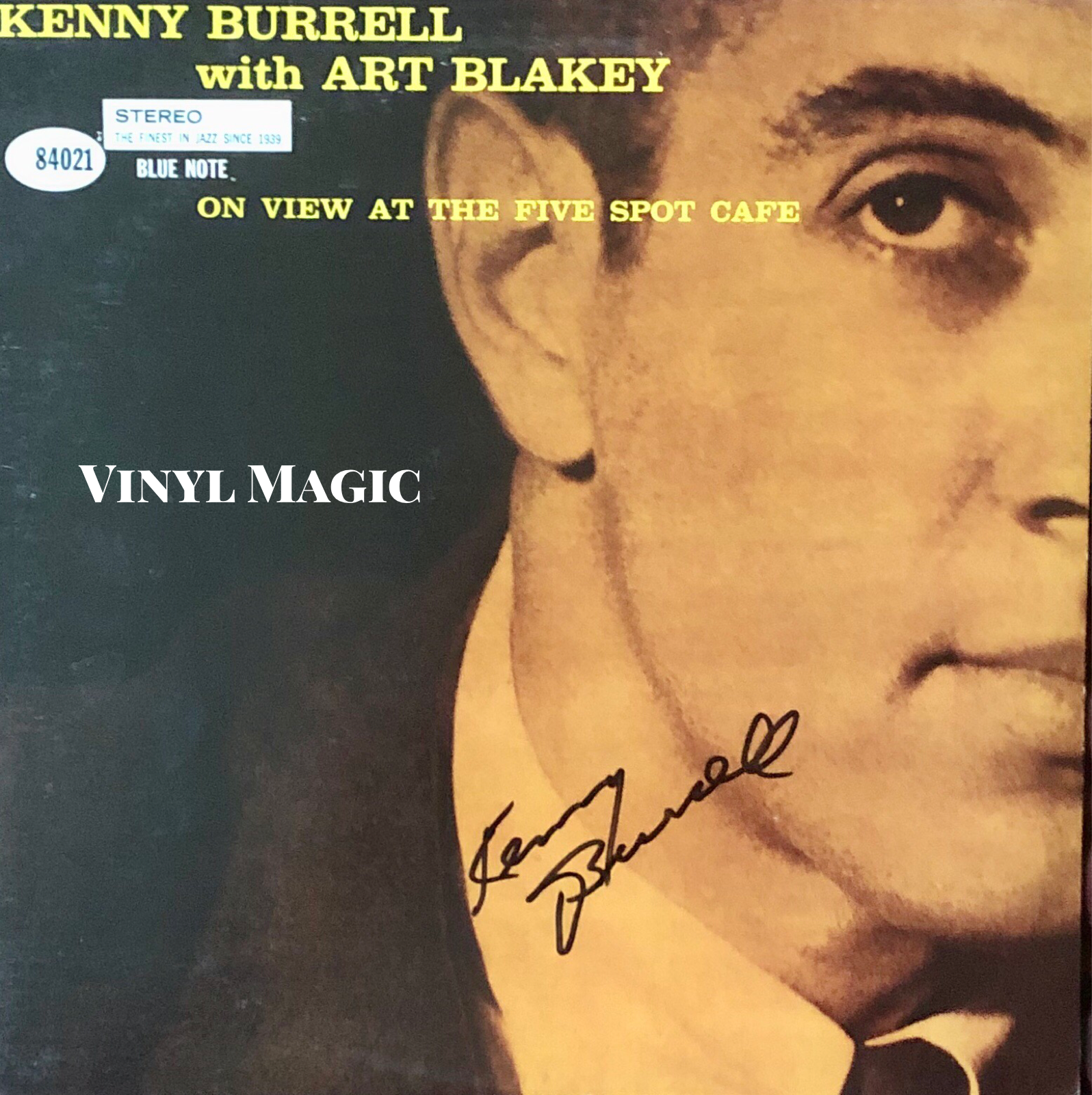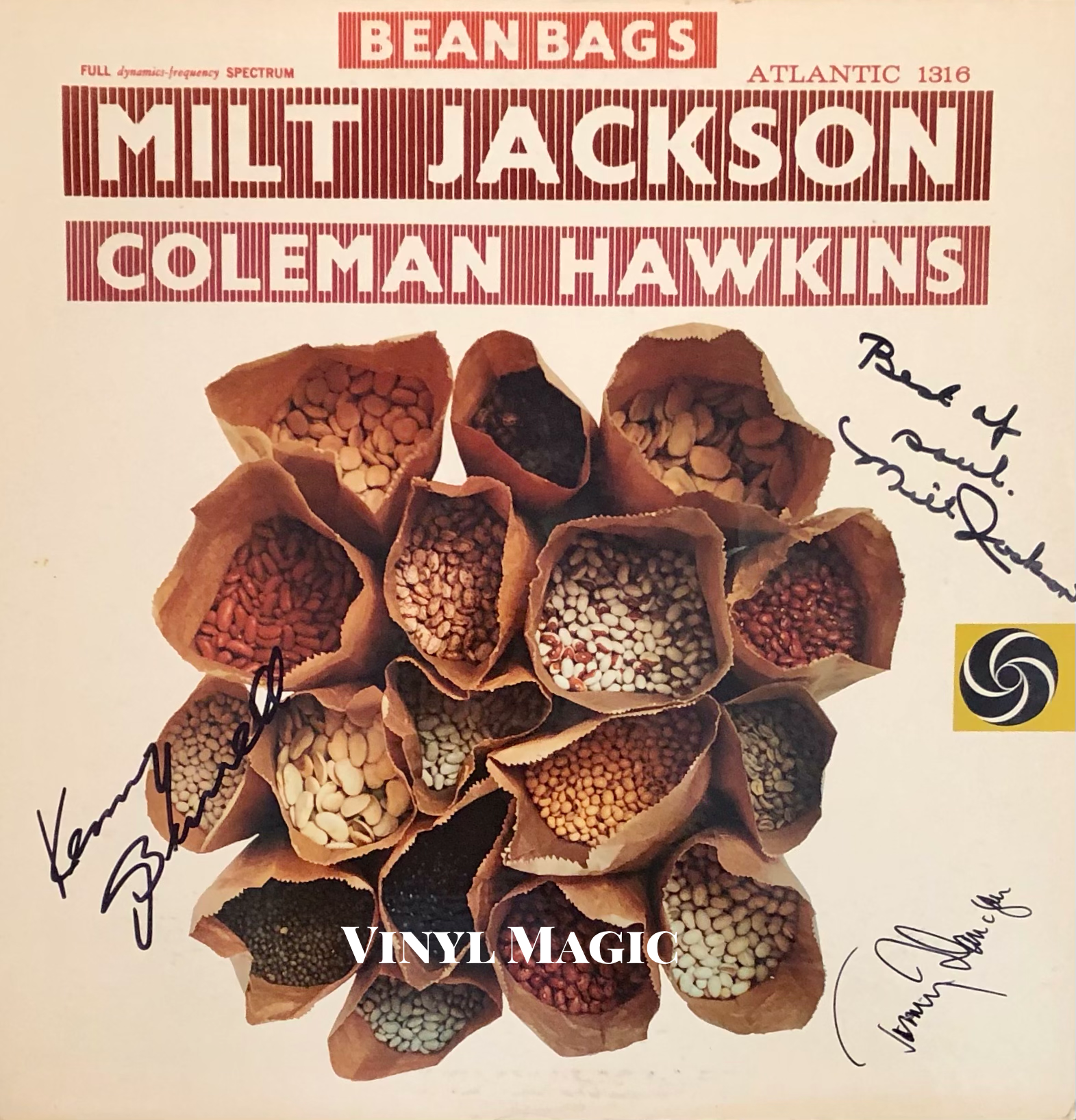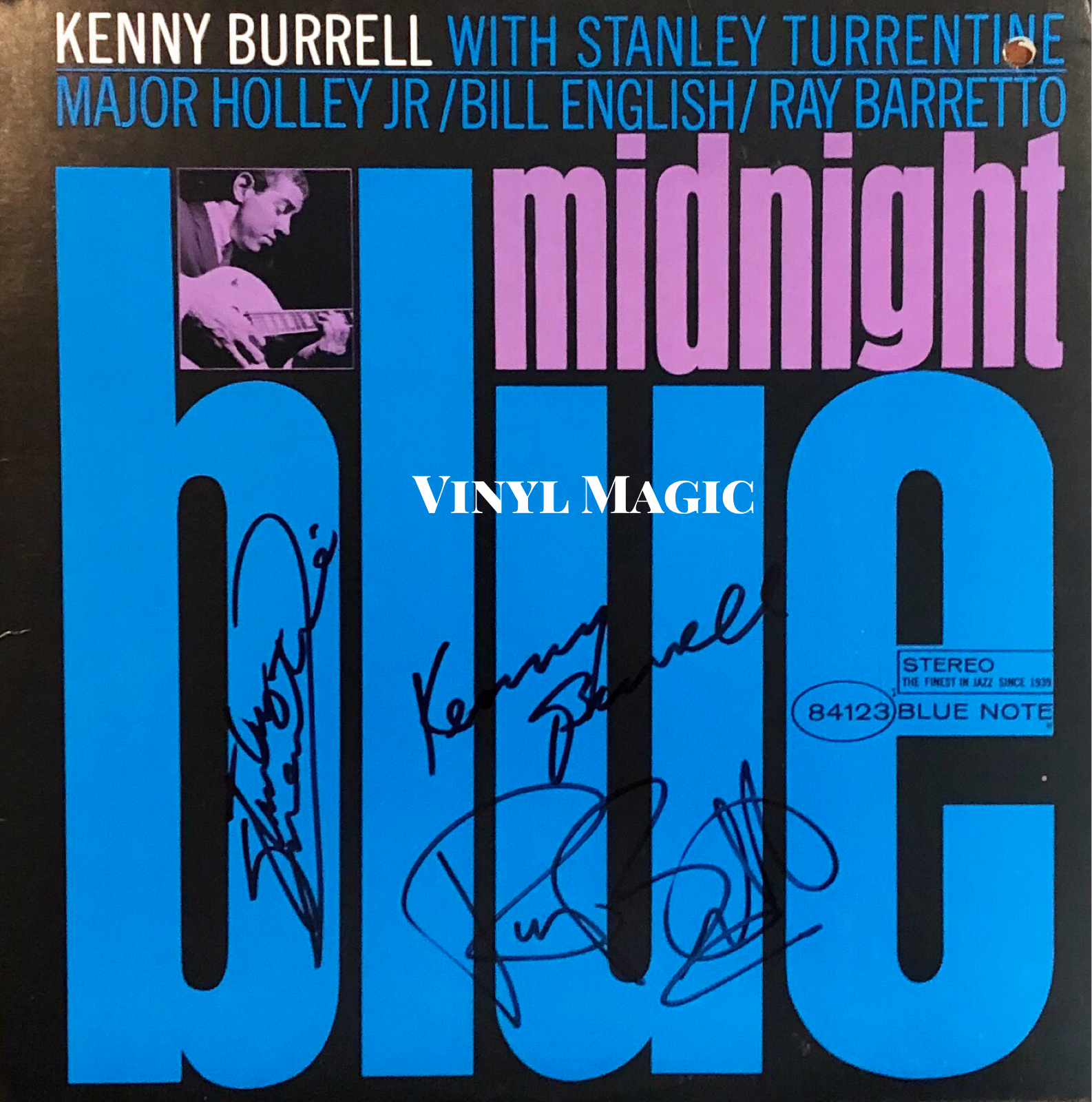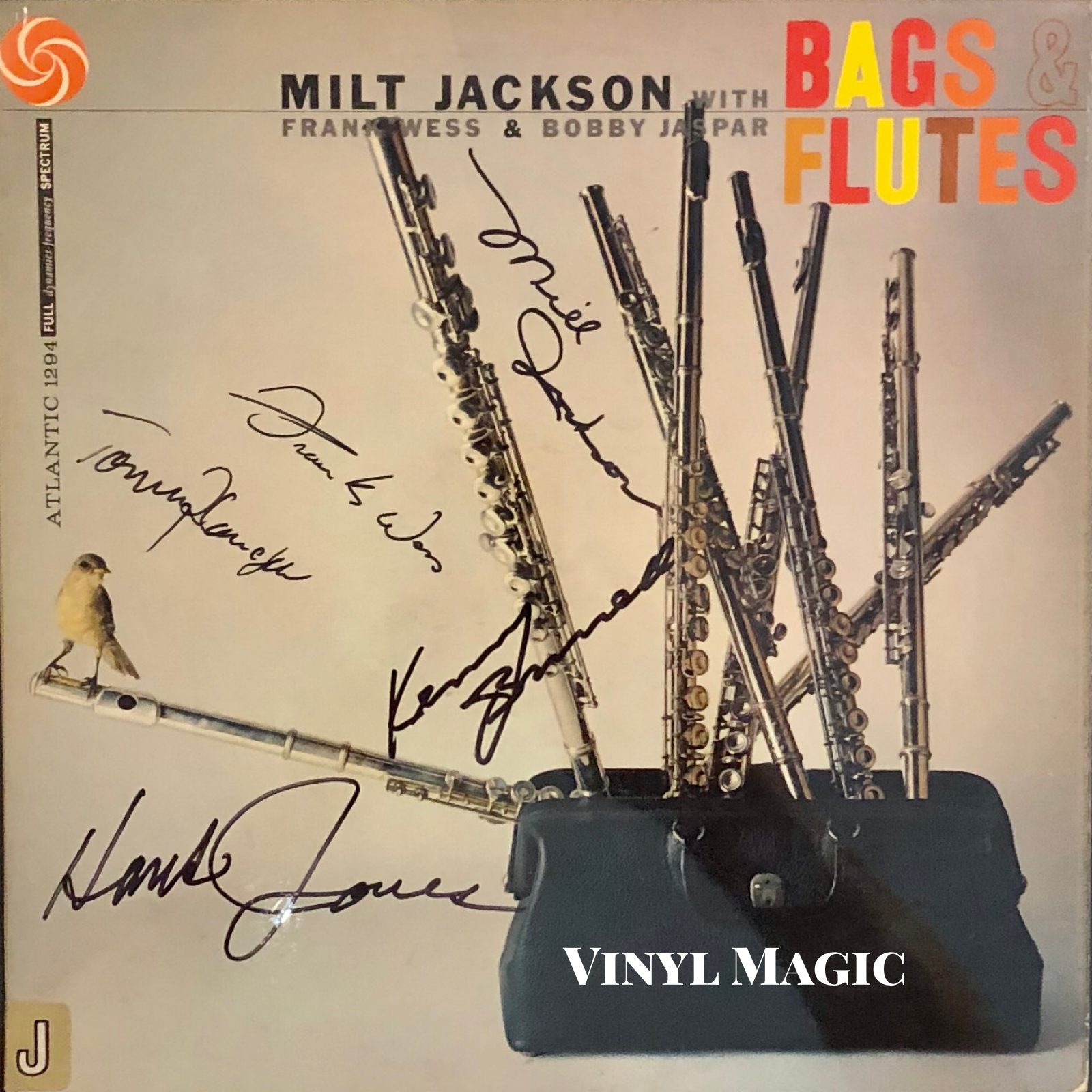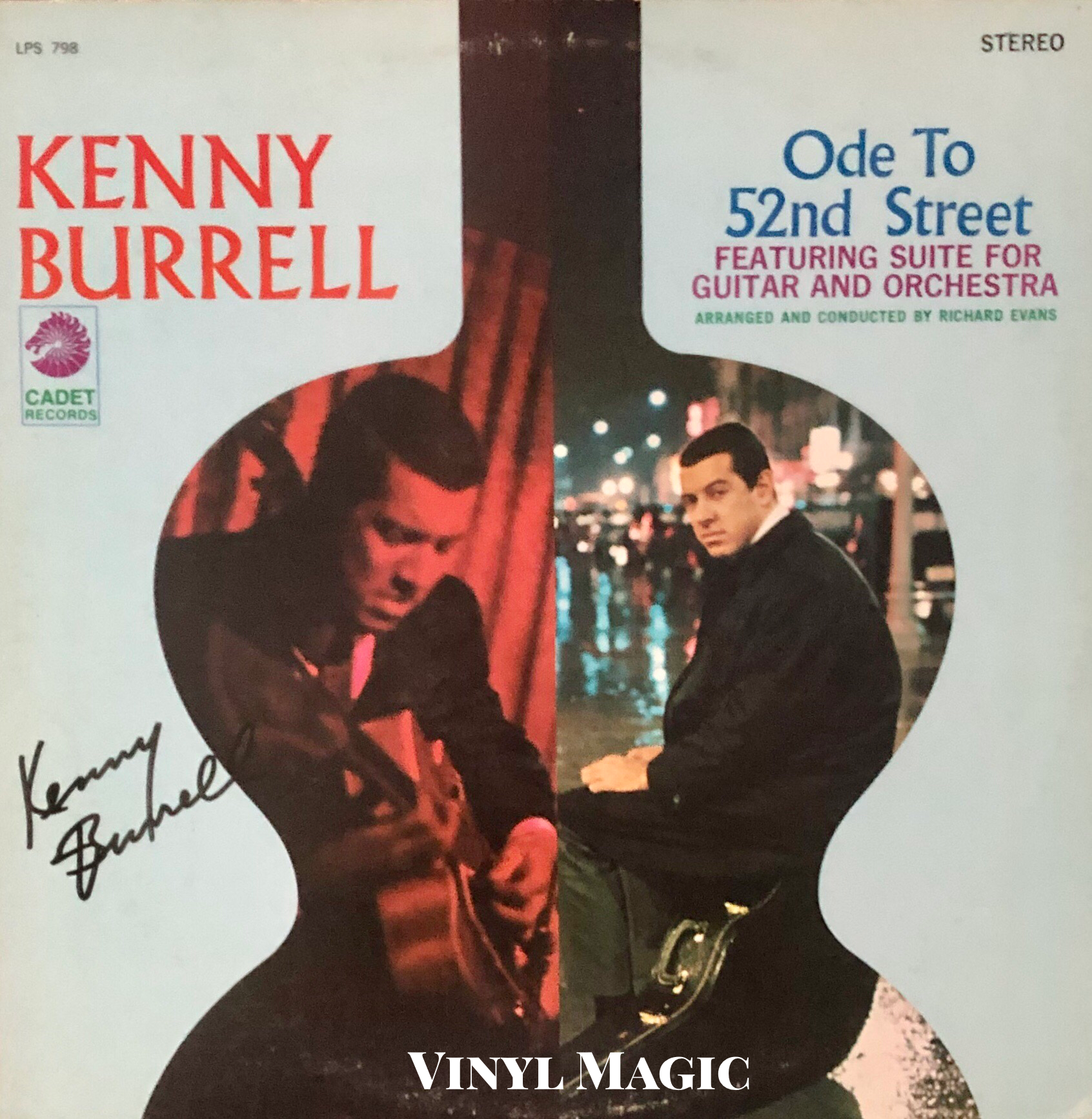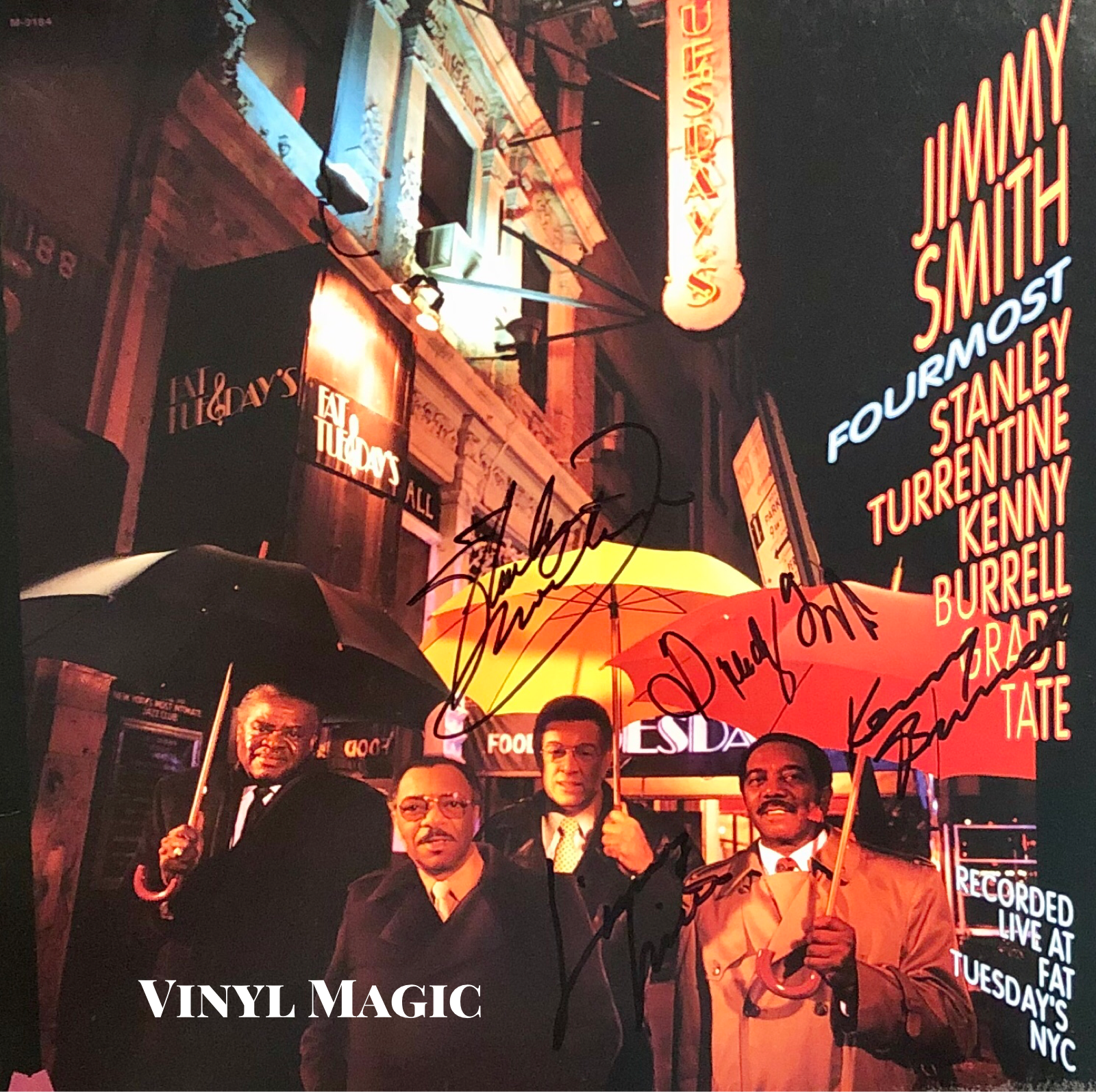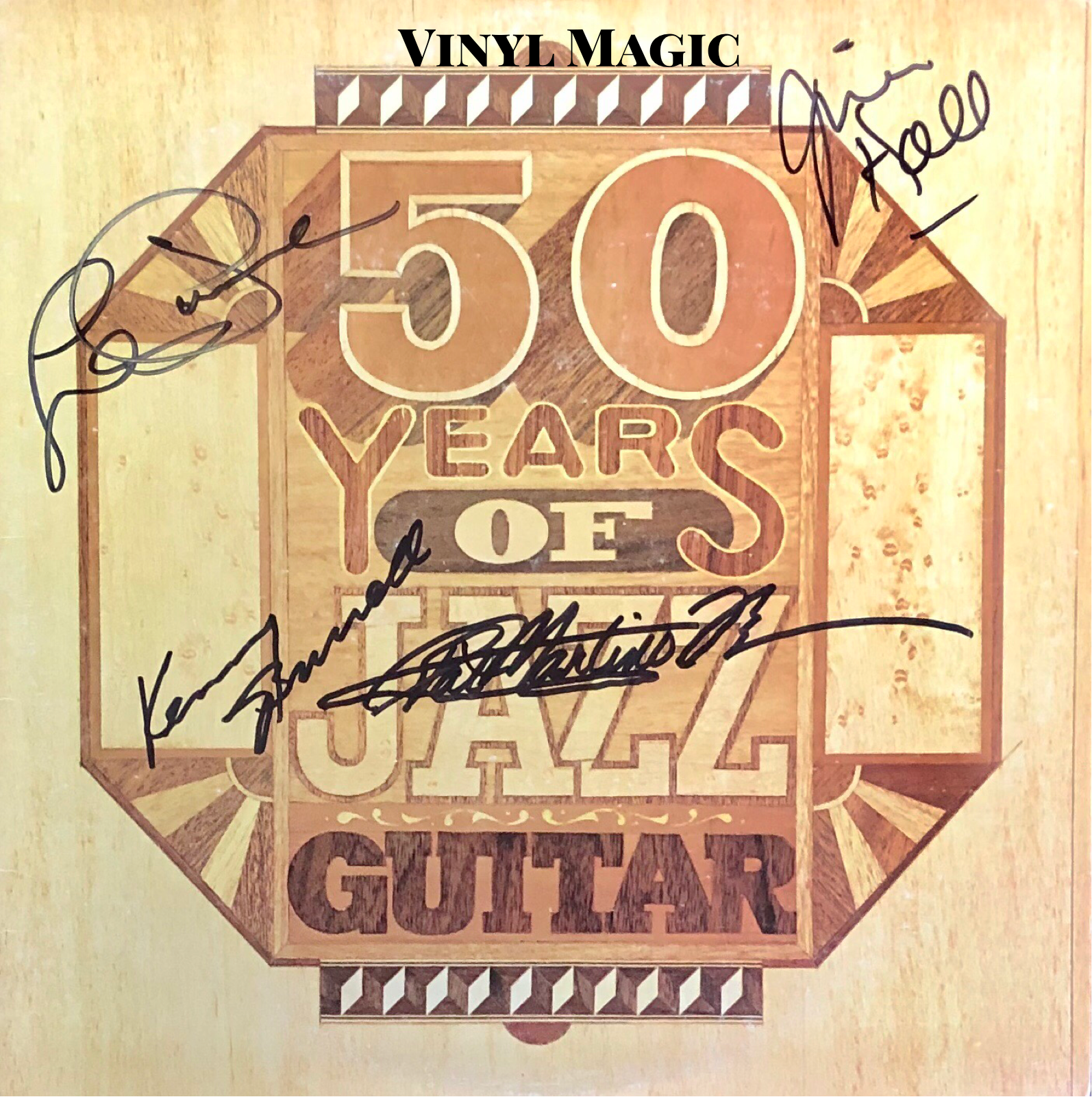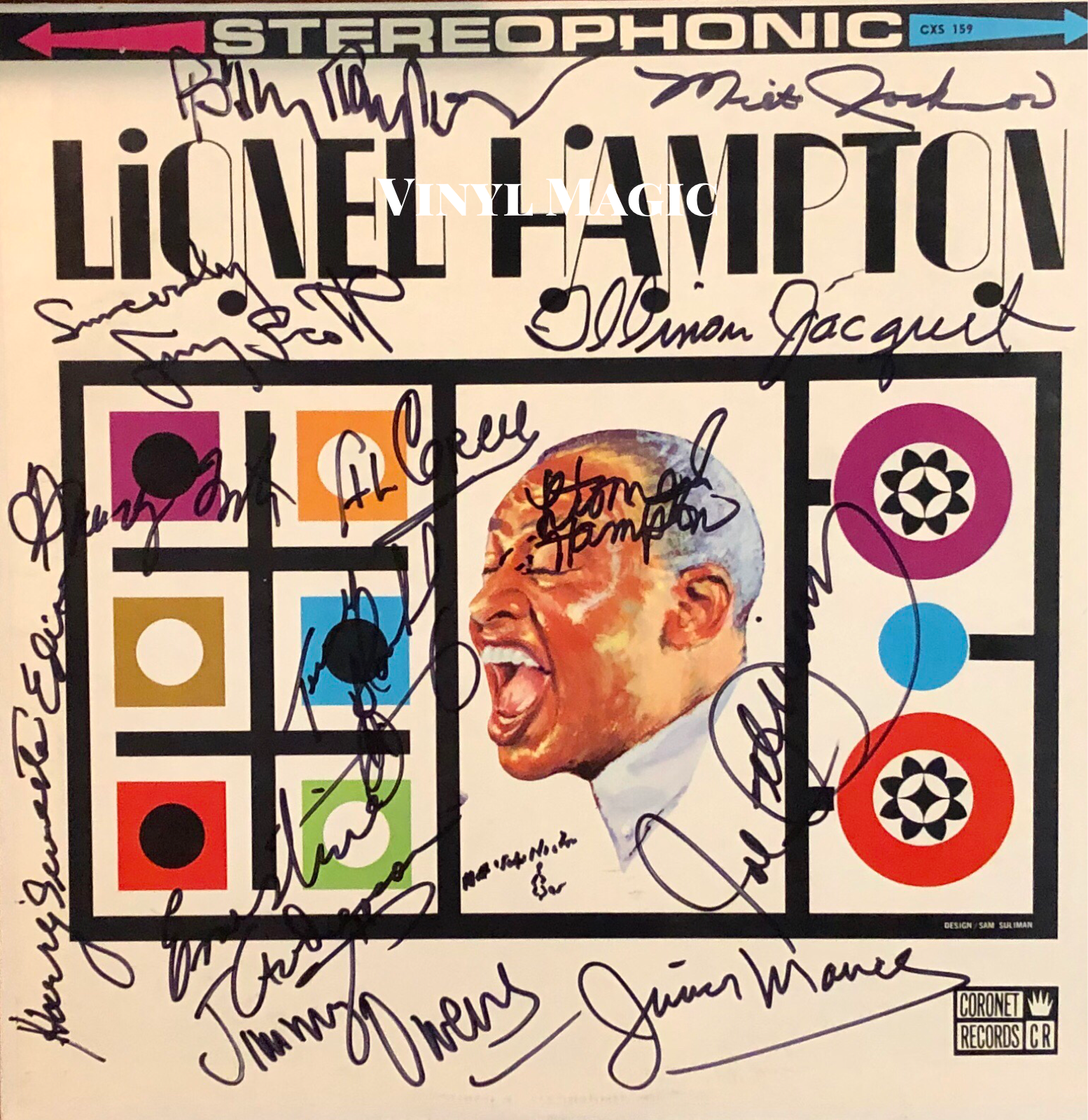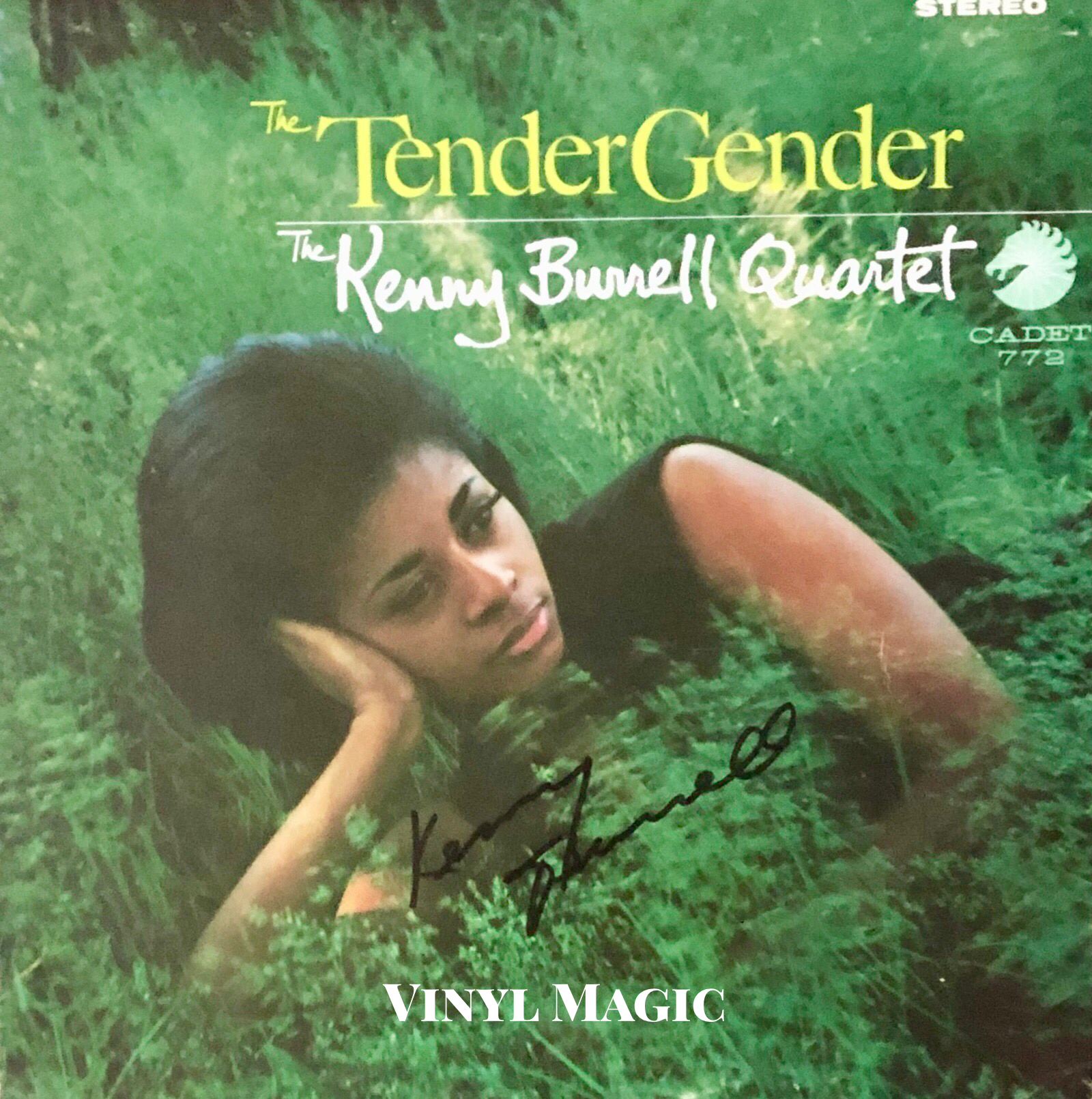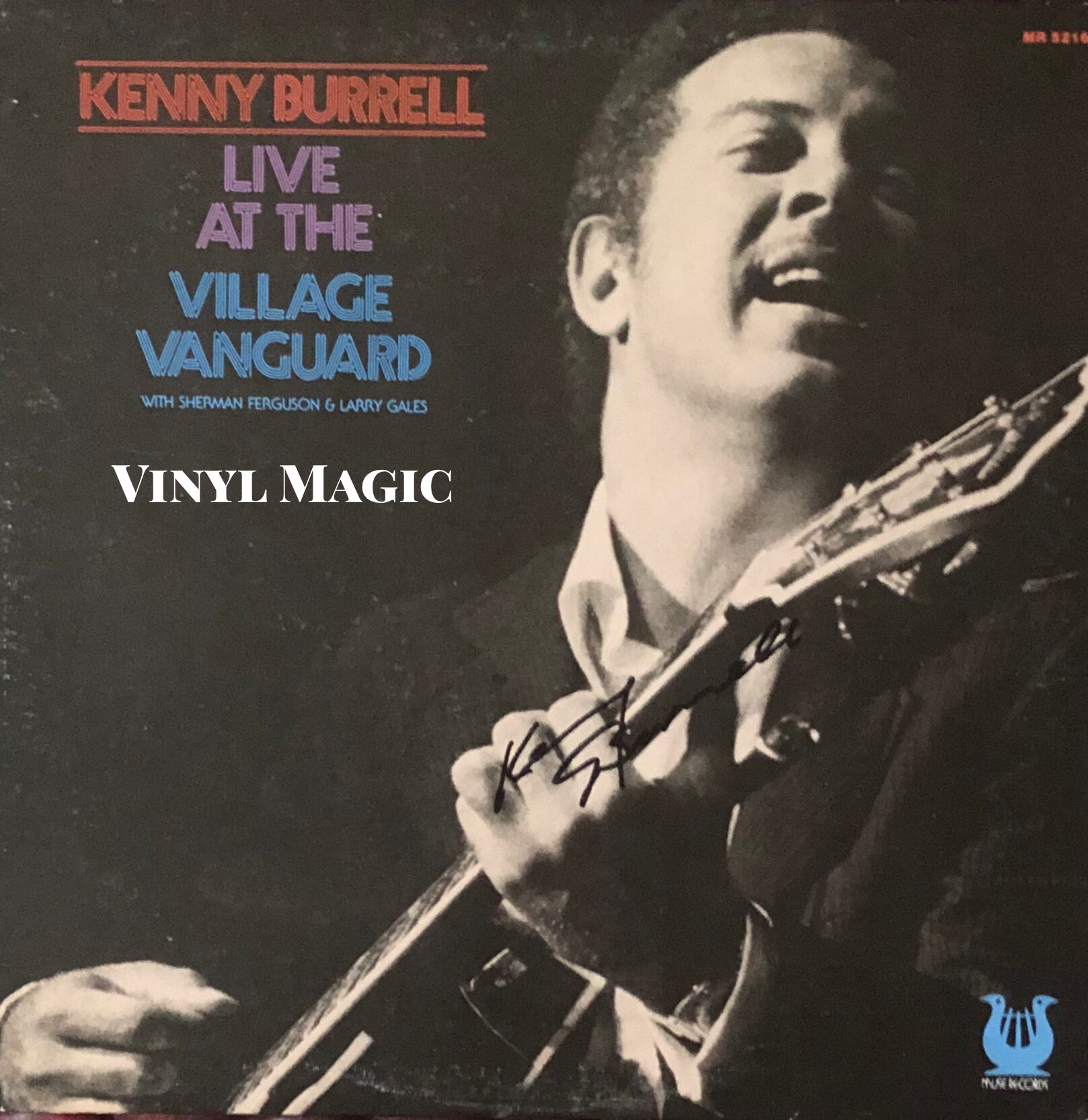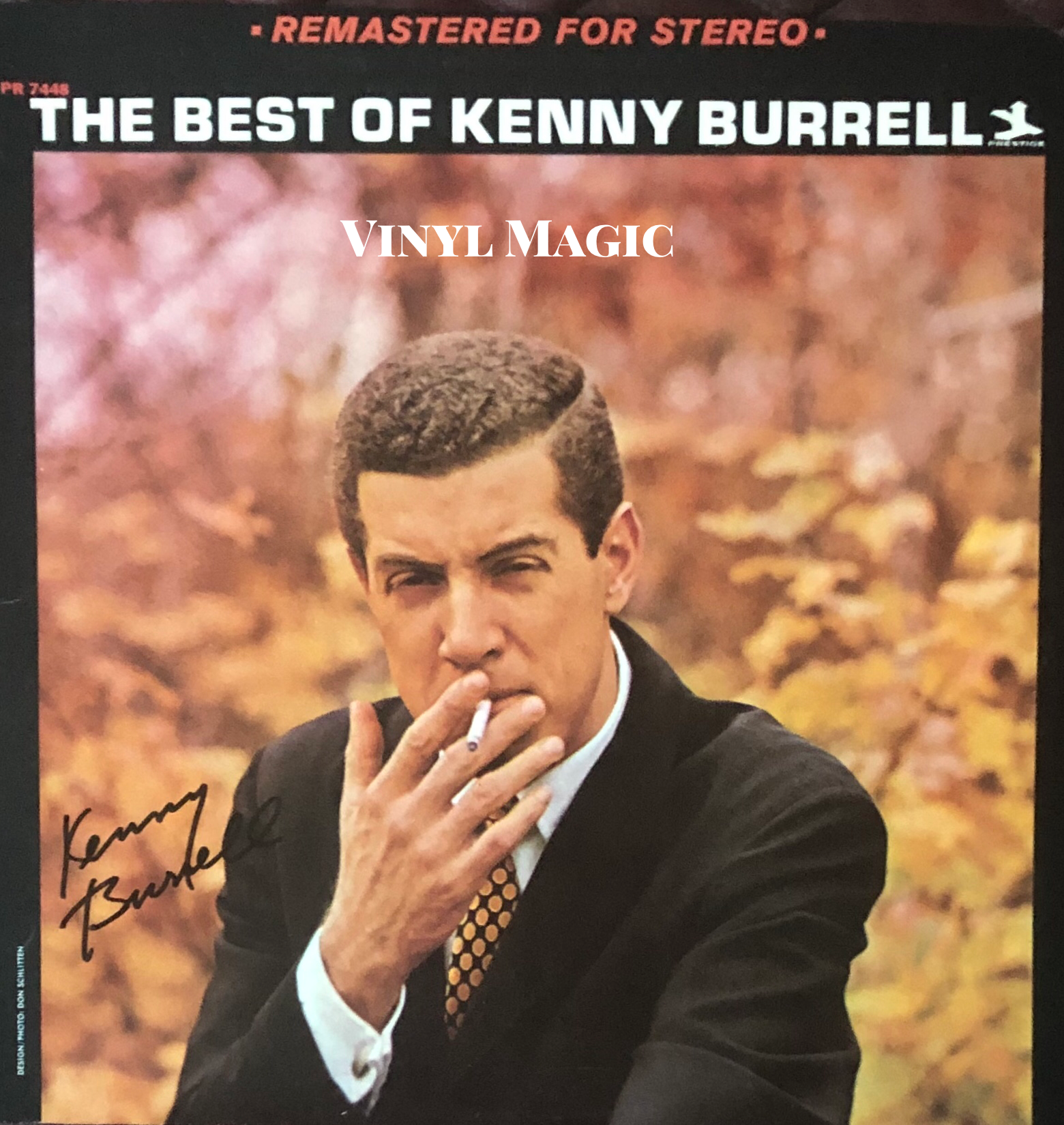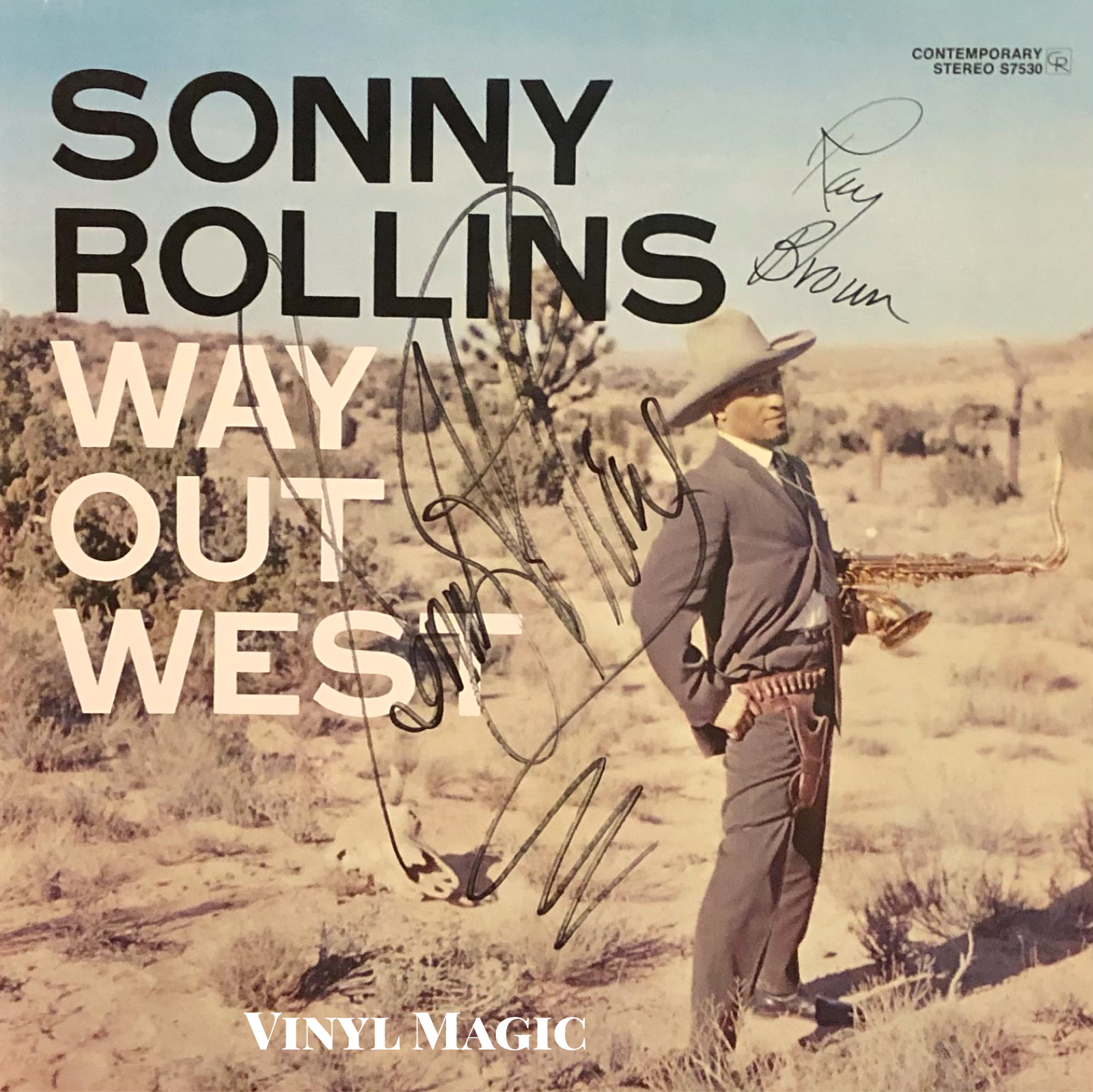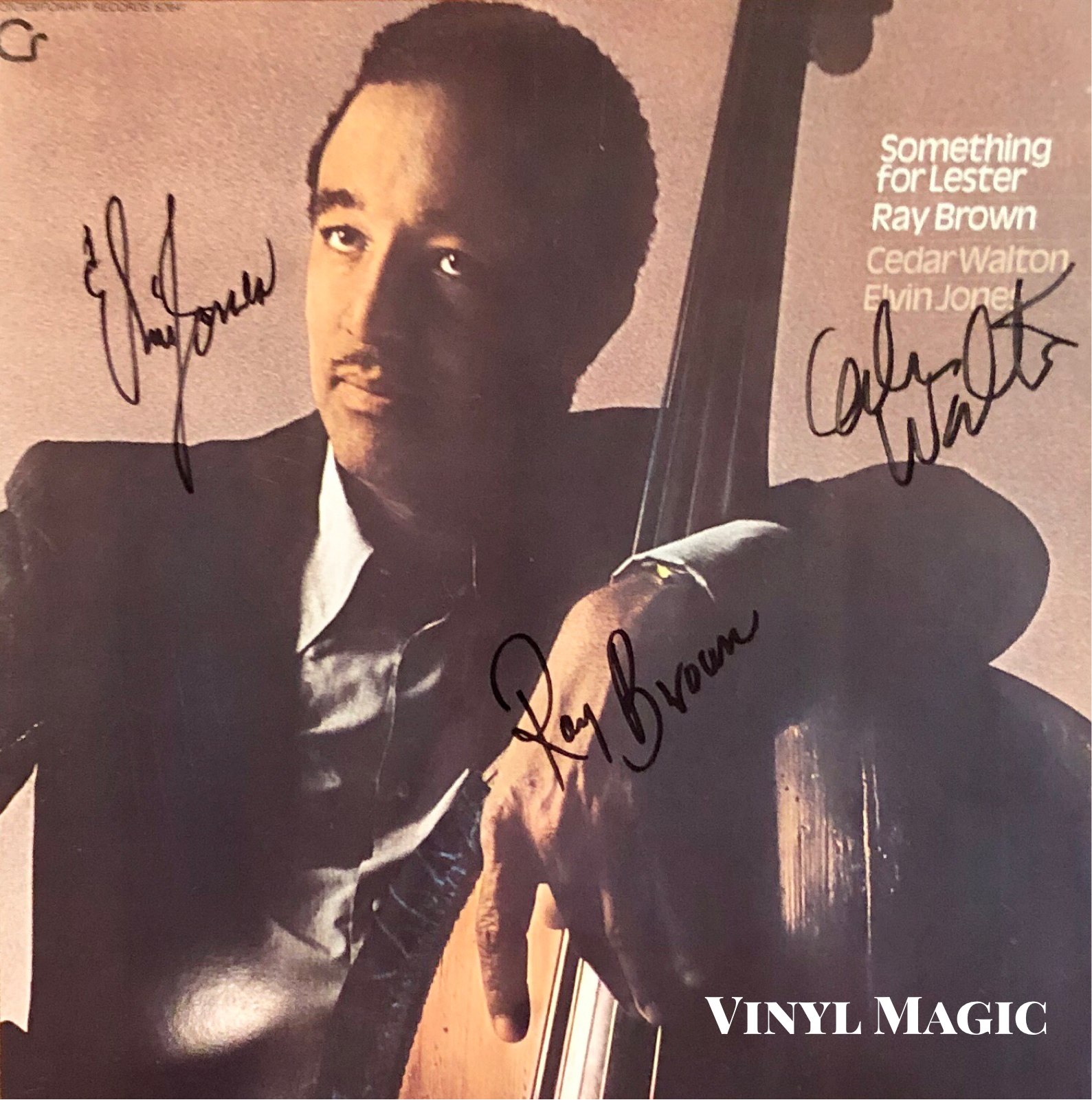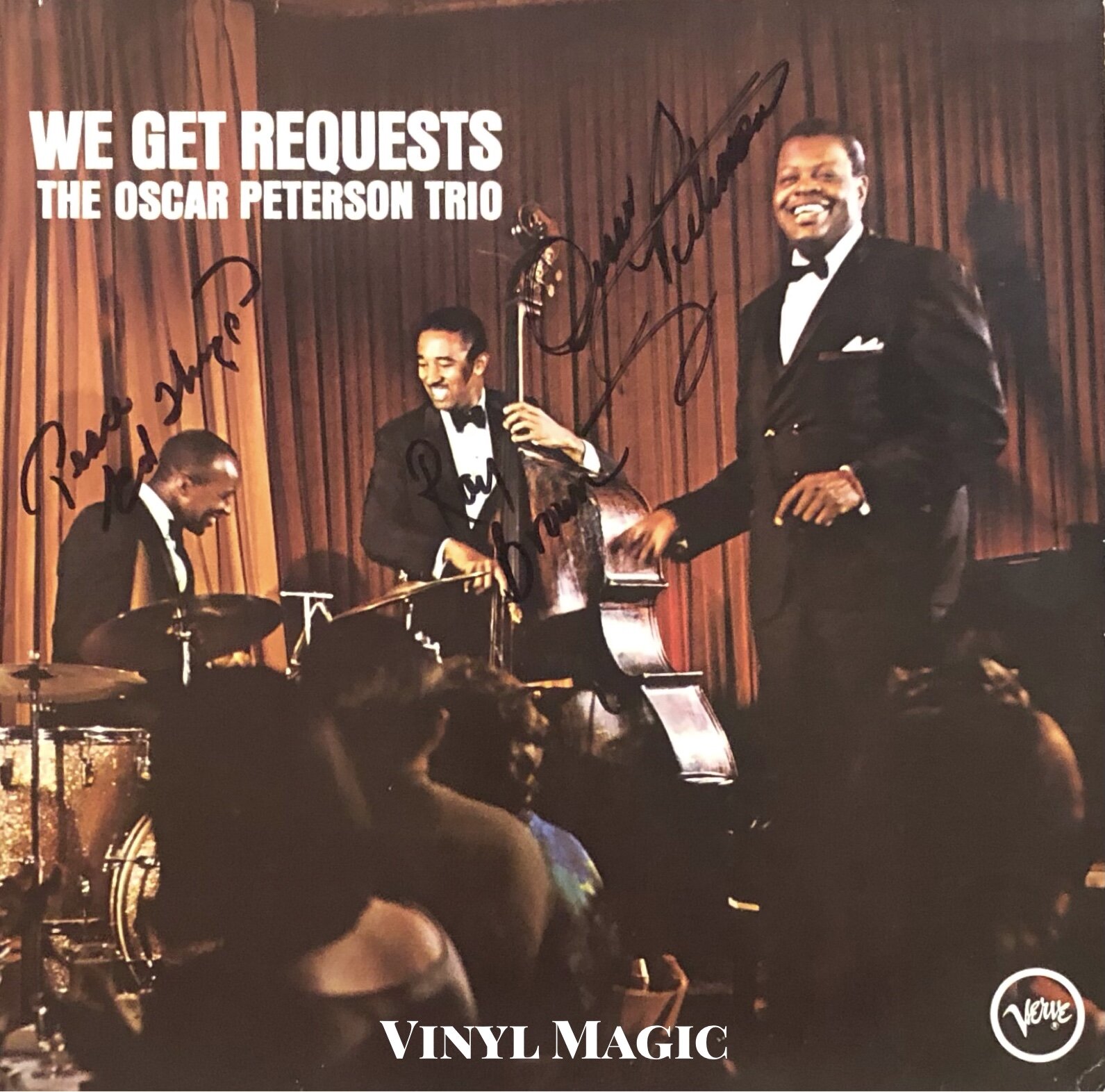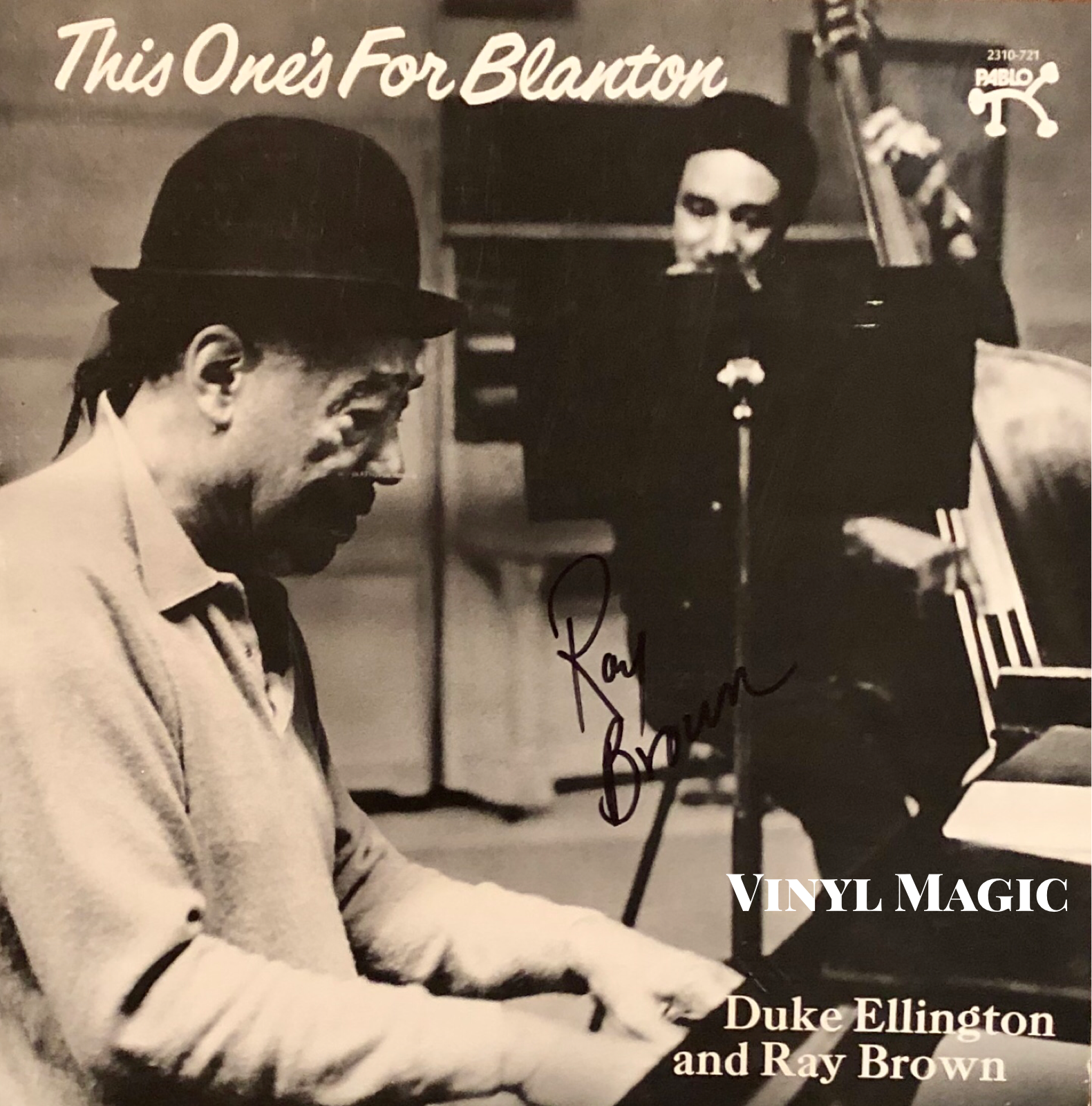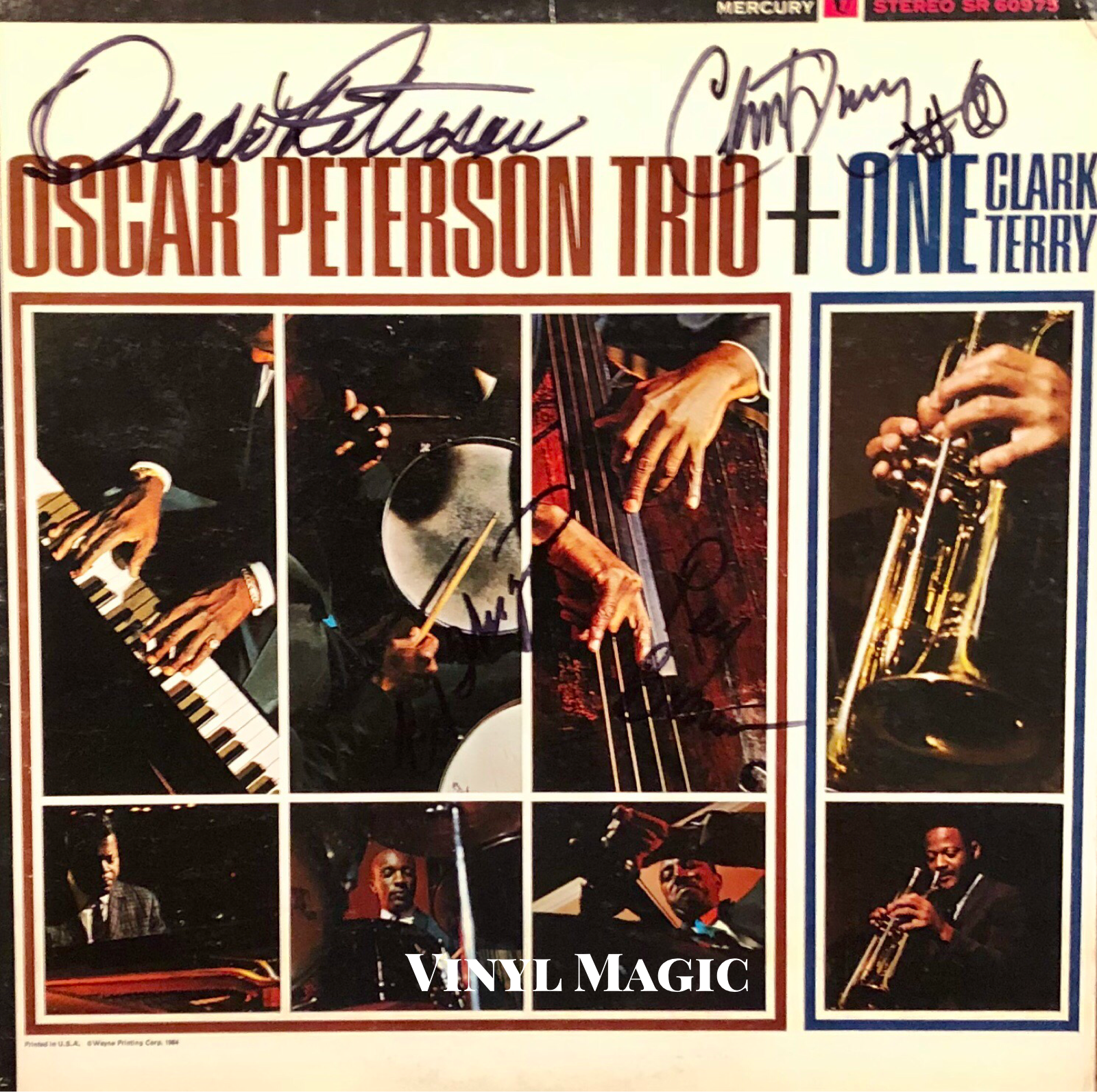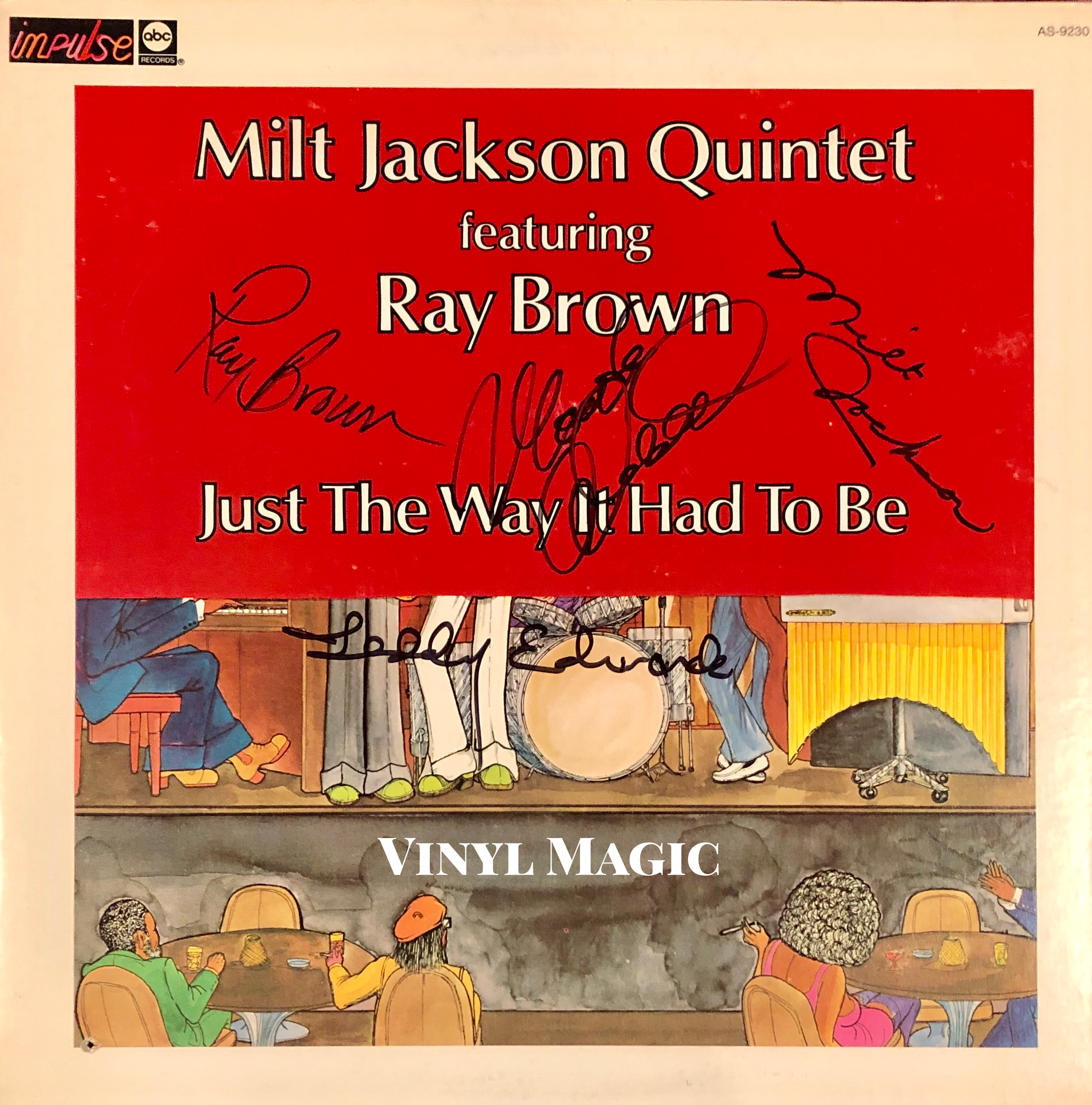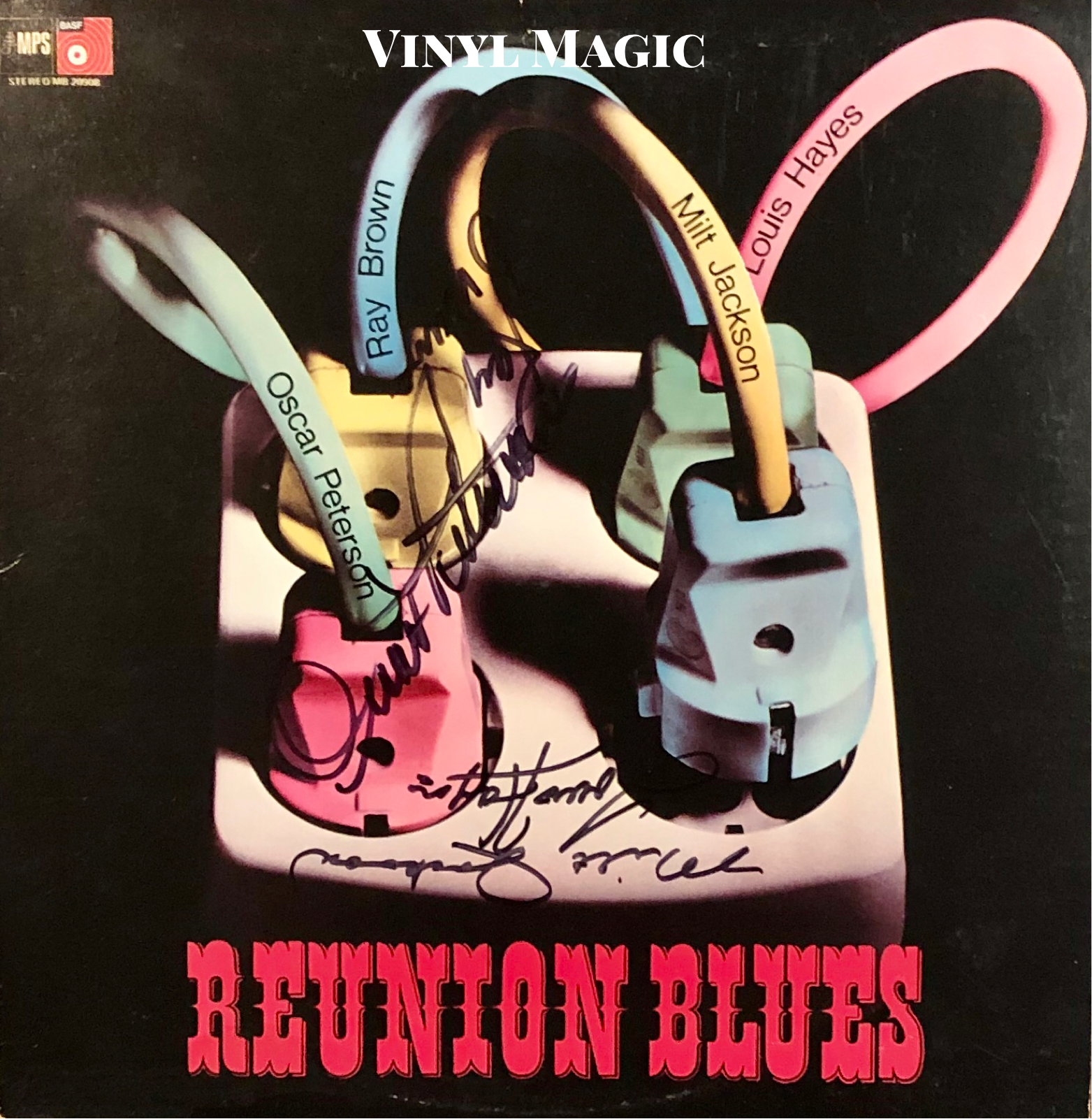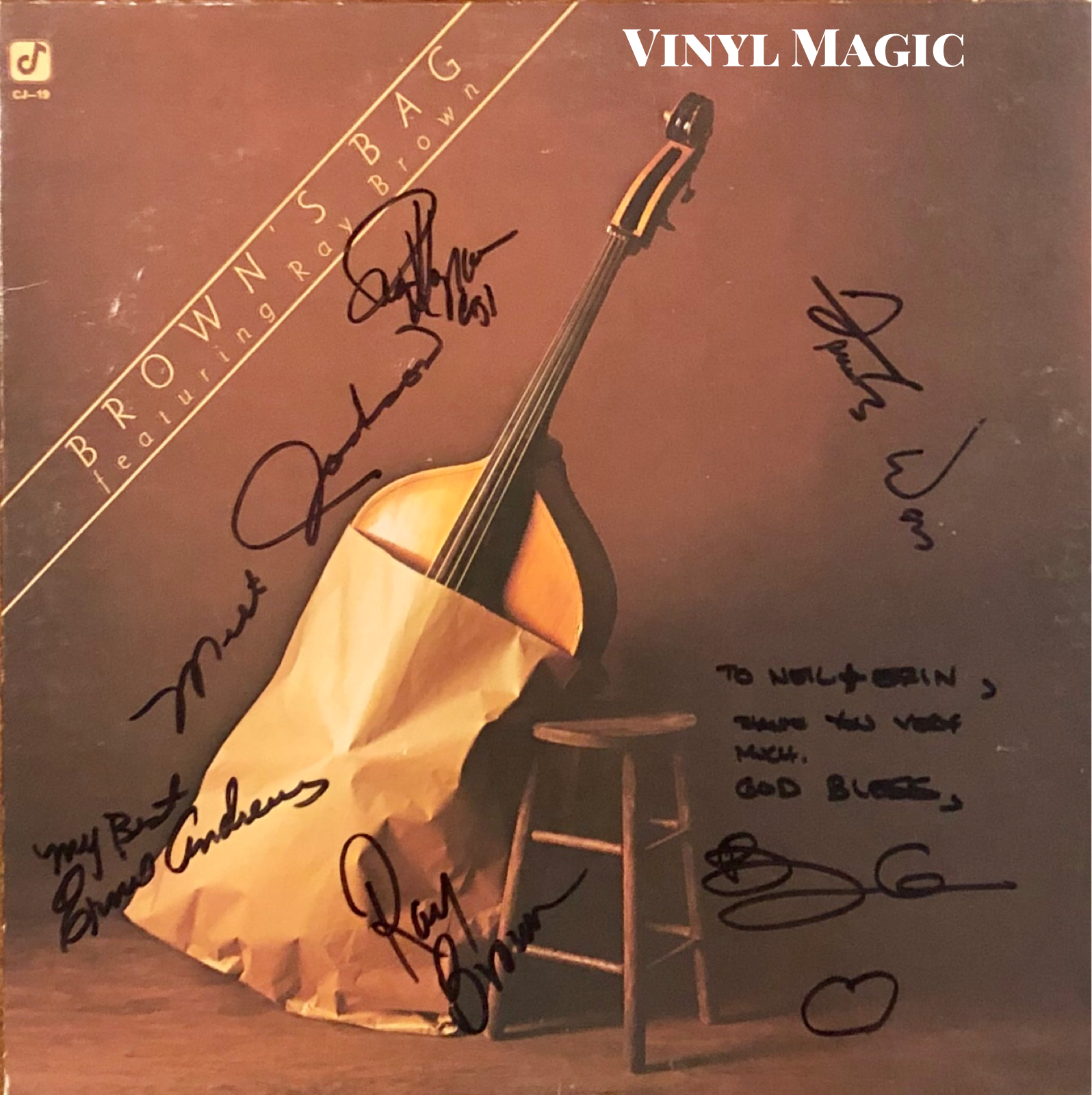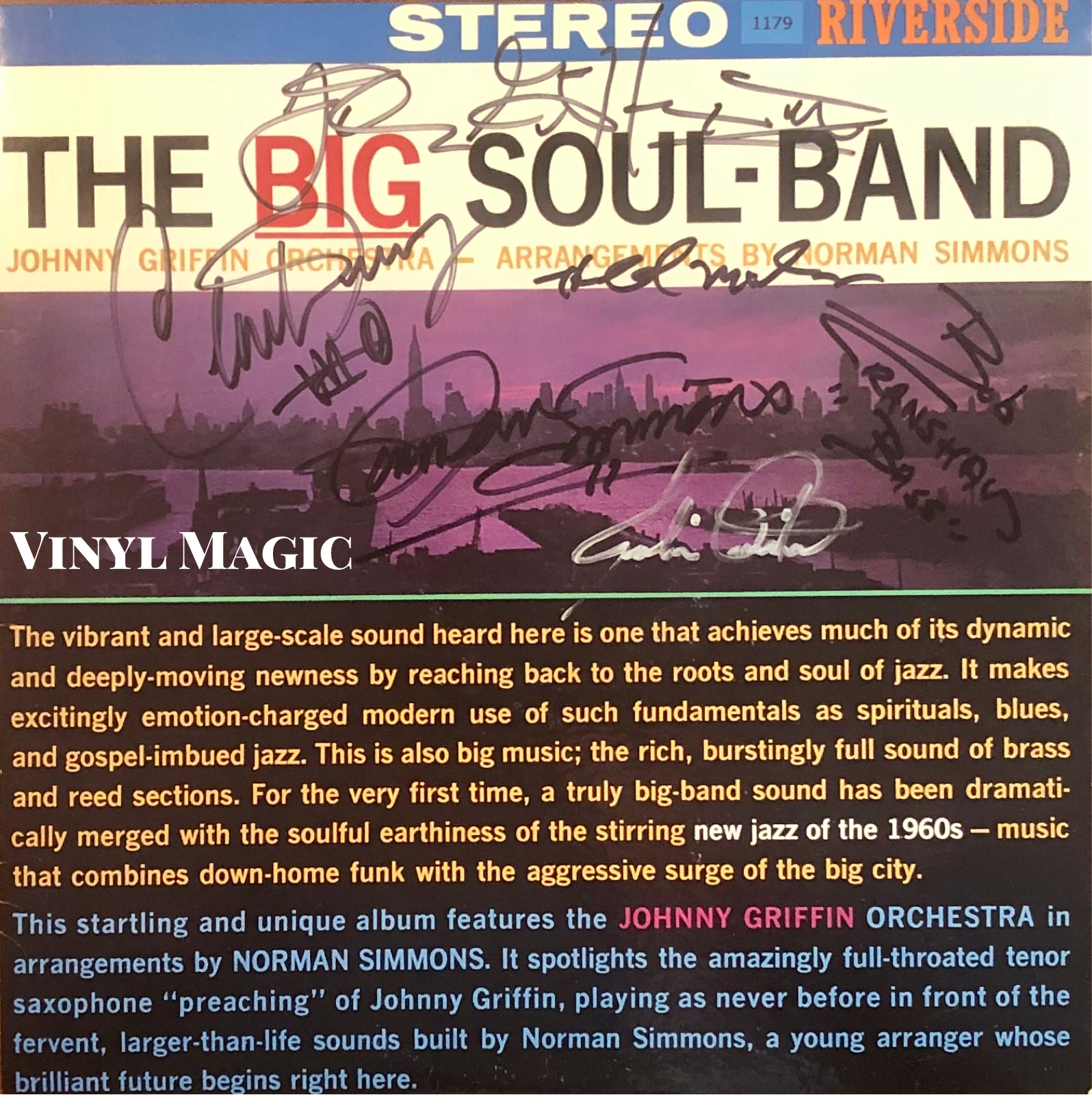Louis Hayes and Me…
He worked at Ford Motor. He also played drums and piano, and gigged for a time in Detroit, but then he just played when he was at home. A piano was pretty much in everyone's home before TV, so I started out playing piano. But my father's drums were always there, all set up. One day when I was about eight years old, I began playing with them, and my father gave me a little drum pad to practice on...
The drums were just enjoyable to play, the piano was a chore. With the drums, no one had to tell me to practice. My father could see early that I could do certain things and was impressed, but he didn't want me to play for a living. He knew how hard music was as a way to earn money, especially with all the competition in Detroit.
Louis Hayes
It’s Magic (1957) signed by Louis, Tommy Flanagan, Curtis Fuller
My mother was very religious and played piano. She'd take me to church and I'd experience the choirs. Those emotional, spiritual feelings in the church played an important role in shaping me as an artist. My mom used to take me to some churches where the choir was so strong, you couldn't help but get the feeling.
Louis Hayes
A Long Drink Ogf The Blues (1957) signed by Louis, Curtis Fuller, Jackie McLean
Each city had its jazz cliques. In Detroit in the late 1940s, you had Kenny Burrell, Barry Harris, Tommy Flanagan, Elvin Jones, Yusef Lateef and others. I had my own compadres, but I wasn't on the level of those other guys. But I kept working and pushing. I always knew I was going to make a mark one day. But I was afraid to play around those older guys. At first, I didn't want them to know I played music or drums. I had an ego, which is important, and didn't want it crushed. Detroit was a place where musicians constantly challenged each other. Me and my buddies would go to different clubs to watch the musicians on their jobs, as though we were just going to listen. Then when musicians weren't cutting it, we'd take their jobs. That built our confidence without putting their egos on the spot.
Louis Hayes
Jazz For The Thinker (1957) signed by Louis, Curtis Fuller
I was nineteen (when I joined Horace Silver). I wasn't too concerned about fitting in, though, I wasn't nervous. When I came up in Detroit, it was a place where musicians' level of playing was high. I had already been around people who had played very well. New York definitely was a step up. For sure, there were major players in New York, but in Detroit, Yusef Lateef's group was pretty tight. When guys came from New York to Detroit to jam, they'd have to deal with those guys - Yusef, Paul Chambers, and so on.
Louis Hayes moving to NYC and joining Horace Silver
The Cats (1959) signed by Louis, Kenny Burrell, Tommy Flanagan
Horace to me was such a unique pianist, his direction, the way he accompanied and the way he soloed. When you are fortunate to have the ability to sound different than most people, that is a real gift. Horace sounded different than most pianists. Listening to the way he constructed his solos and accompanied someone was so special. He played a major role in the way I played. I was listening mostly to his rhythmic patterns more than the melody. Those patterns were strong and made it comfortable for me to play a certain way and find my voice. Horace played in a way that was so busy, with so much time and rhythm and bounce going on. That helped me get stronger as a drummer, to raise my game and to take more creative risks. But there were no empty spaces, you had to be on the go and thinking the entire time. His playing was about excitement and that made the group stronger and more powerful.
Louis Hayes
Son Of Drum Suite (1961) signed by Louis
People were coming to me and saying these different things. When you’re accepted by your peers, people like Miles Davis and John Coltrane, you know you’re doing just fine. If the phone rings for work, that says it all. Back then, you were measured by how often you got work and by the friends you were associating with. If certain people wanted you around, you were on a special level.
Louis Hayes
Work Song (1960) signed by Louis
A gifted and prolific drummer, Louis Hayes has performed on countless classic jazz recordings with iconic artists Cannonball Adderley, Kenny Burrell, John Coltrane, Dexter Gordon, Freddie Hubbard, Yusef Lateef and Oscar Peterson. In his nearly seventy year performing career, Louis has released more than twenty records as a leader, and he has provided his steely backbeat and rock ribbed rhythm on more than five-hundred albums, quite a decorated discography. As James Brown reminds us, exceedingly appropriate for Louis Hayes, “give the drummer some!”
Reunion Blues (1971) signed by Louis, Ray Brown, Milt Jackson, Oscar Peterson
Born in Detroit to a hardworking family - his father was an auto assembly worker and his mother was a waitress - Louis was surrounded by music, as his dad played drums and mom played piano. In the 1940s and 1950s, Detroit had a thriving music scene, and Louis eventually performed with other Detroit jazz luminaries Kenny Burrell, Tommy Flanagan, Barry Harris and Yusef Lateef.
Cannonball Adderley Sextet In New York (1964) signed by Louis
He got his first drum kit when he was ten and his cousin gave him sound direction and counsel, "My father was the one who interested me and my cousin Clarence Stamp in music. My cousin was a drummer. He would have been a drummer of note had he continued. He was ten years older than I was. I'm the only student he ever had. He could read music well and he taught me how to play the drums. My cousin was responsible for the way I've always thought when playing with a group. He said, 'If anything goes wrong with the band, It's your fault. As a drummer, you have control of the group.' " Sage words from cousin Clarence which Louis took to heart as he began his performing career.
Fiddler On The Roof (1964) signed by Louis, Charles Lloyd, Joe Zawinul
By the time he was fifteen, Louis was leading his own groups in teenage clubs where no alcohol was served. Yusef Lateef, a multi-instrumentalist of renown, gave him his first break when he was eighteen, "I knew Yusef, but he wasn't aware of me. After I auditioned for him, he came to my house to tell me I had the job, but he said, 'I'm going to give you a six week trial period.' The only problem was that I would be playing at Klein's Show Bar and you were supposed to be twenty-one to do that. I was only eighteen. No one paid any attention to my age and we had a marvelous time. I learned to be a professional there. With Yusef, we played four or five days a week, and the musicians were older. You either grow to that level fast or you didn't make it."
The Hub Of Hubbard (1970) signed by Louis, Freddie Hubbard, Richard Davis, Sir Roland Hanna
Louis more than held his own and, soon, the lights of New York City beckoned, "I had always wanted to be in New York. It was a dream, but I was too young in the early 1950s to just pick up and say, "I'm moving to New York.' In 1956, bassist Doug Watkins, who had moved to New York and was with Art Blakey and The Jazz Messengers, returned to Detroit for some reason. We played together at a club in Detroit one night, and he encouraged me to make the move. Soon, after Doug returned to New York, the original Messengers broke up. Horace (Silver) left, taking Doug with him and Doug recommended me and trombonist Curtis Fuller."
The Kicker (1967) signed by Louis, Joe Henderson, Kenny Barron , Ron Carter
So began an engagement and adventure with Horace Silver on some of the most acclaimed Blue Note recordings in the history of jazz, bebop, hard bop or otherwise: "Senor Blues," "Blowin' The Blues Away," "Peace" and "Sister Sadie" among them. Pretty heady stuff for a musician, especially for Louis who had barely turned nineteen. Louis remembered fondly, "Horace gave me these different records to listen to, including the one Horace and the Jazz Messengers had recorded for Columbia. There were certain tunes that he wanted me to hear. What wasn't on record, he played for me up at his apartment in the 70s, on the Upper West Side. He was a composition writer, meaning there were no vamp sections - everything was written out. Horace was a gentleman and a nice guy. I was very comfortable with him. Horace never told me what to play, or how to play it. He never said anything like that. He'd play things for me on his baby grand, and I'd listen and pick it up. Also, we always played gigs and rehearsed at Nola's Studio in New York before recording anything, so I knew the songs cold by the time they appeared on recordings. I always got warm with Horace's music first."
The Real Thing (1979) signed by Louis
After performing and recording with Horace Silver from 1956-1959, the warmth continued when Louis joined the Cannonball Adderley Quintet which enjoyed even more commercial success. The Cannonball Adderley Quintet In San Francisco, recorded at the Jazz Workshop in 1959, was probably the first 'noisy live’ album and it captured the raucous energy of the crowd at the packed club. Louis stayed with the Adderley brothers for six years, releasing a staggering seventeen records and helped usher in soul jazz, a potent mix of country, jazz, rhythm and blues, and soul in a combustible, engaging mix. Then, Louis joined the great Oscar Peterson trio when drummer Ed Thigpen departed, completing Louis’ participation in an unparalleled trilogy of jazz artists, each as stunning and profound as the other. It was really a remarkable eleven year run. Since the 1970s, Louis has led his own groups and released his own albums while also playing innumerable sessions and gigs.
Major Changes (1987) signed by Louis, Frank Morgan, Avery Sharpe, McCoy Tyner
I have seen Louis many times over the years, mostly in intimate clubs like the Blue Note or the Village Vanguard in New York City. Recently, Erin and I saw Louis at the Jazz Forum in Tarrytown, New York in September 2019. Louis was sitting in with an all star group: Javon Jackson on tenor saxophone, George Cables on piano, and David Williams on bass. Javon was ostensibly the leader, but we all knew who was in control of the group, just as cousin Clarence had told Louis all those years ago. Highlights were Tadd Dameron's "Traneing In," a hard bop classic blower, Thelonious Monk's "Well You Needn't" with Louis providing a crisp backbeat, and "My One And Only Love." a gorgeous ballad with Javon’s warm buttery tenor accented with Louis’ exquisite brushwork. It was a beautiful night of beautiful music.
Resurgence! (1980) signed by Louis, David Fathead Newman, Cedar Walton, Buster Williams
After the show, Erin and I went to see the fellas in their crowded dressing room. We had a bunch of vinyl to sign as they were all leaders in their own bands and had distinguished careers. As pianist George Cables - nicknamed "Mr. Beautiful" by Art Pepper - signed some Art Pepper records, Louis laughed, "Remember when we were playing in San Francisco and between sets, in the dressing room, Art took off his shirt and was strutting around. We started calling him Nefer-Tittie. He didn't like that so much." When I handed him Vim ‘N’ Vigor, I asked him about the cover, “I had absolutely nothing to do with that. That was the record label,” he said with some disdain for the bikini clad bodybuilder gracing the cover. When he signed The Quintet In San Francisco, “Oh I love this album, Cannon was something else. We really had a lot of fun.” And made some timeless music. Erin and I thanked him and the other musicians for their time and, especially, their music.
Louis Hayes, the consummate drummer, musician and jazz man, always keeping things warm and in control.
Vim ‘n’ Vigor (1984) signed by Louis
Choice Louis Hayes Cuts (per BKs request)
https://www.youtube.com/watch?v=t8jFGFwOm7k
“Senor Blues” live with Horses Silver 1964
https://www.youtube.com/watch?v=SmO2pM20MrU
“Sister Sadie” Blowin’ The Blues Away 1959
https://www.youtube.com/results?search_query=cannonball+adderley
“Work Song” live with Cannonball Adderley 1964
https://www.youtube.com/watch?v=ieaAHwvqljg
“Peace” Blowin’ The Blues Away 1959
https://www.youtube.com/watch?v=73pex5SGd0Y
“Cool Eyes” live with Horace Silver 1958
https://www.youtube.com/watch?v=N45hYXNu12o
“Sack o Woe” Live At The Lighthouse 1960
https://www.youtube.com/watch?v=thmoggeuq1k
“What’s Goin’ On” Louis Plays Marvin! 1978
https://www.youtube.com/watch?v=2XxjBfu3lxQ
“Bohemia After Dark” live with the Adderley brothers
https://www.youtube.com/watch?v=Si2_moPgqns
“On A Clear Day” live with Eric Alexander 2014
https://www.youtube.com/watch?v=XHCq-Moml7U
“Emily” Major Changes with Frank Morgan, McCoy Tyner, Avery Sharpe
Louis Hayes, hands of greatness Jazz Forum, Tarrytown New York September 2019
Javon Jackson, George Cables, David Williams, Louis Hayes Jazz Forum, Tarrytown New York September 2019
Louis Hayes and David Williams at Jazz Forum, Tarrytown New York September 2019
Variety Is The Spice (1979) signed by Louis, Harold Mabern, Portinho










